During my stay at the Wat Doi Suthep temple, after touring the impressive main chedi, I took a stroll around the plateau surrounding the central group of structures. Here, you can find numerous interesting details.
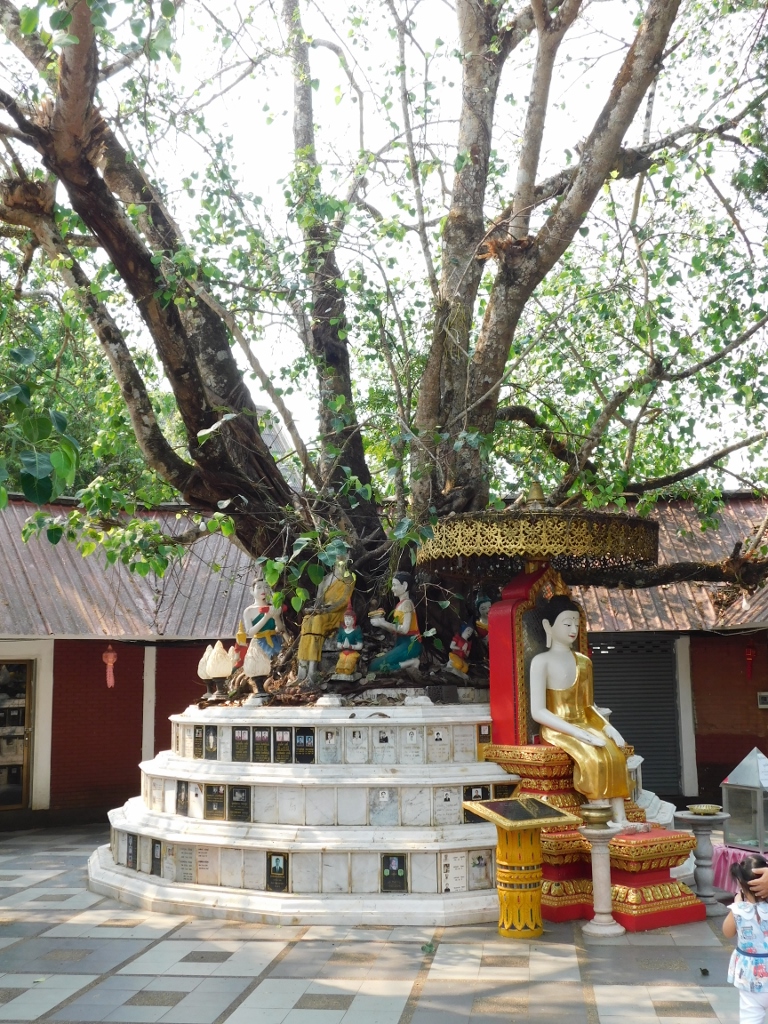 Wat Doi Suthep, a detail
Wat Doi Suthep, a detail
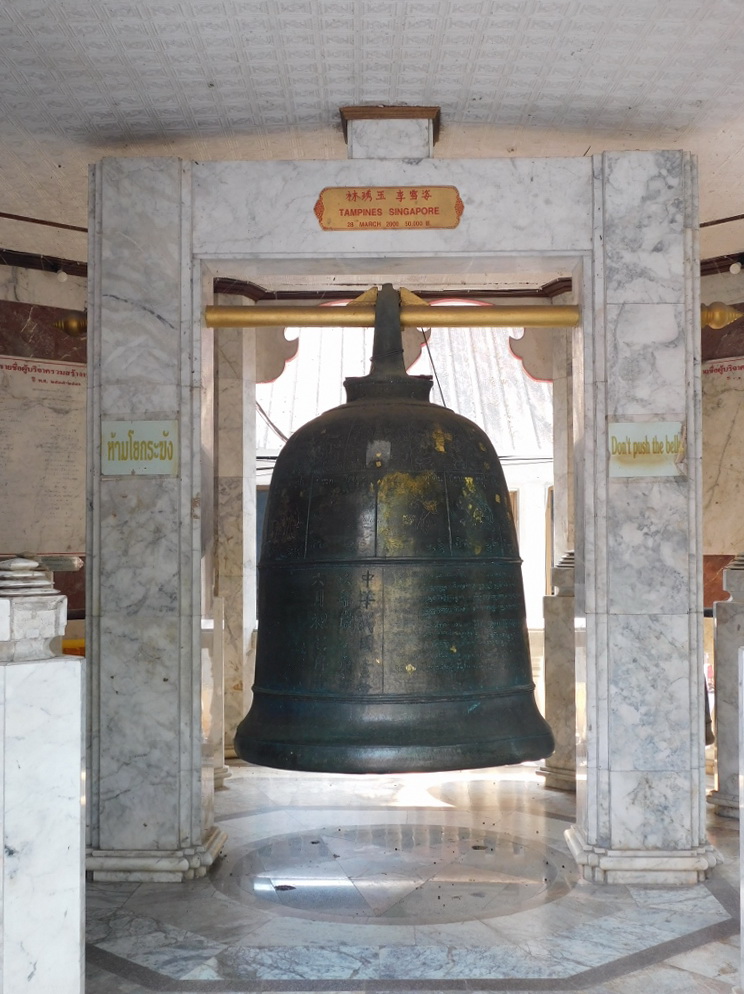 Wat Doi Suthep, a detail
Wat Doi Suthep, a detail
On one structure, there is a gong that several people hit with their hands, causing the gong to produce a very beautiful sound vibration. I also did it, although I don’t know what it’s for, but I couldn’t really record myself at that moment.
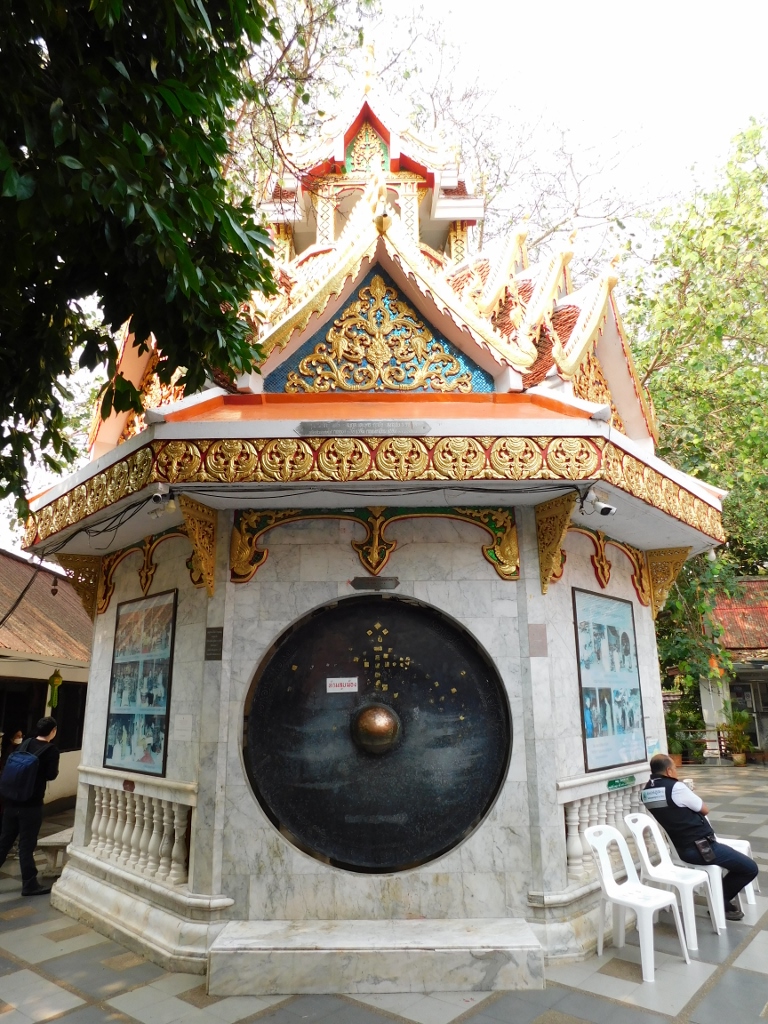 Wat Doi Suthep, a detail
Wat Doi Suthep, a detail
In the immediate vicinity of the gong, there is also a series of smaller bells, but there is a sign indicating that visitors, especially those who have no idea about their purpose, should not play with or move the bells. Just kidding, this wasn’t anything personal and it wasn’t directed only at clueless visitors but at everyone.
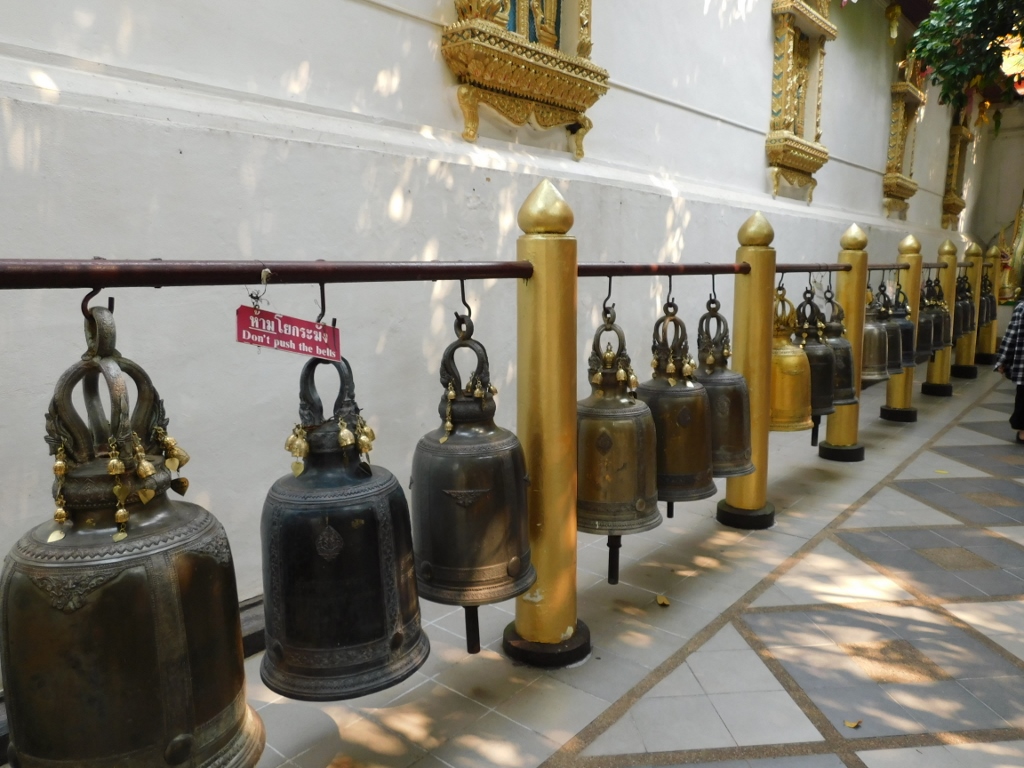 Wat Doi Suthep, a detail
Wat Doi Suthep, a detail
During this pleasant stroll, I could see a huge number of different structures and details, and I even photographed some of them. For instance, there was an impressive wood carving piece.
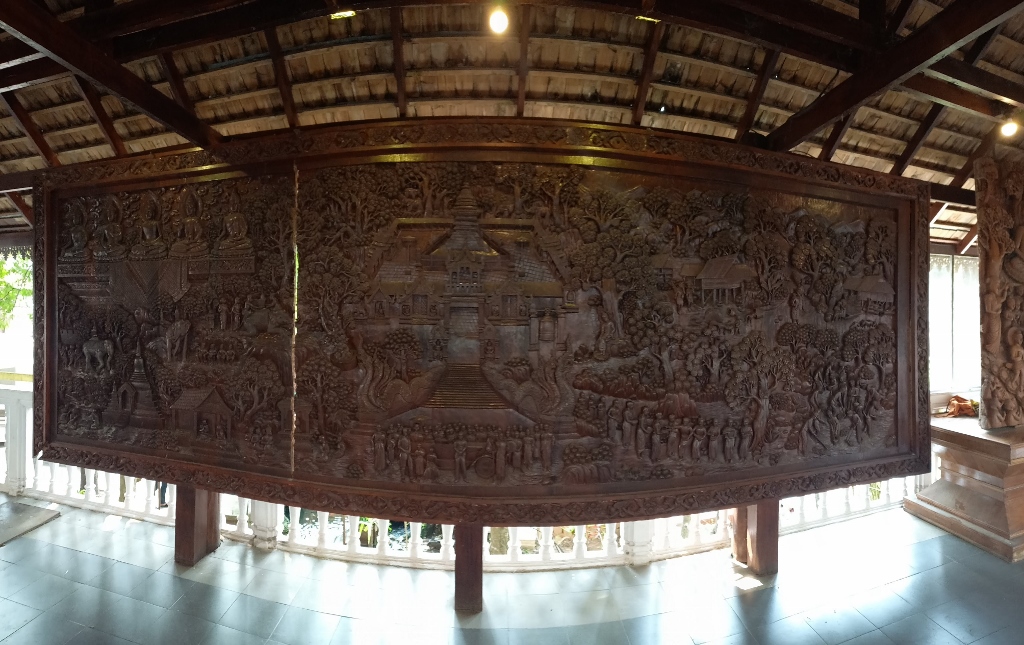 Wat Doi Suthep, a detail
Wat Doi Suthep, a detail
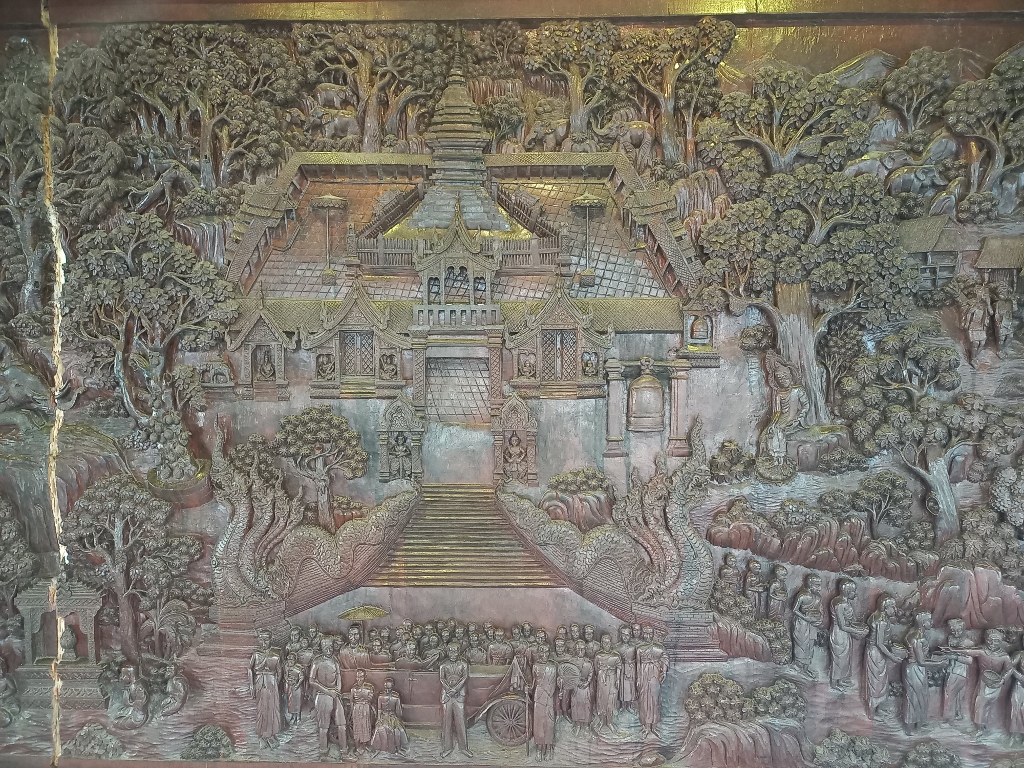 Wat Doi Suthep, a detail
Wat Doi Suthep, a detail
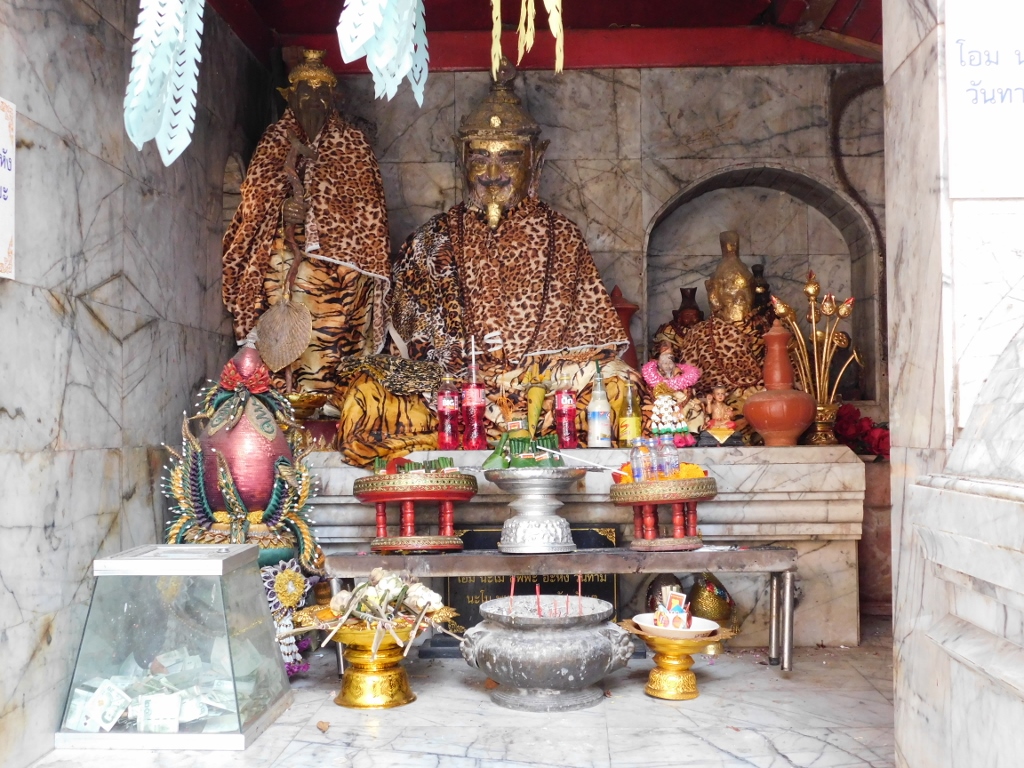 Wat Doi Suthep, a detail
Wat Doi Suthep, a detail
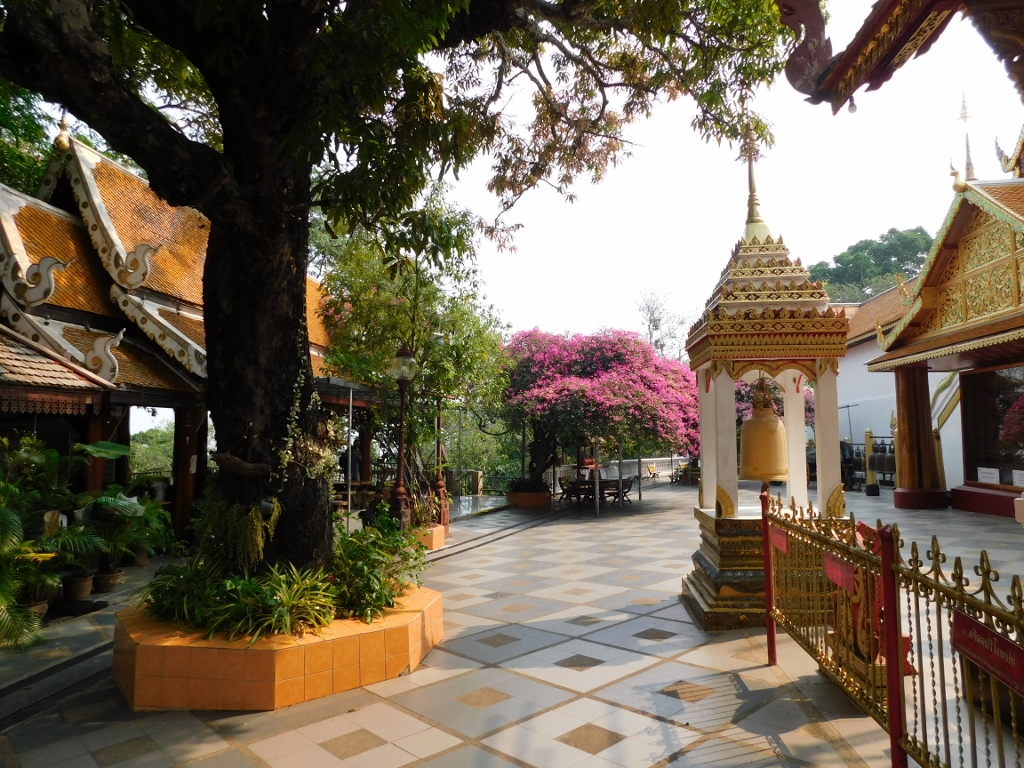 Wat Doi Suthep, a detail
Wat Doi Suthep, a detail
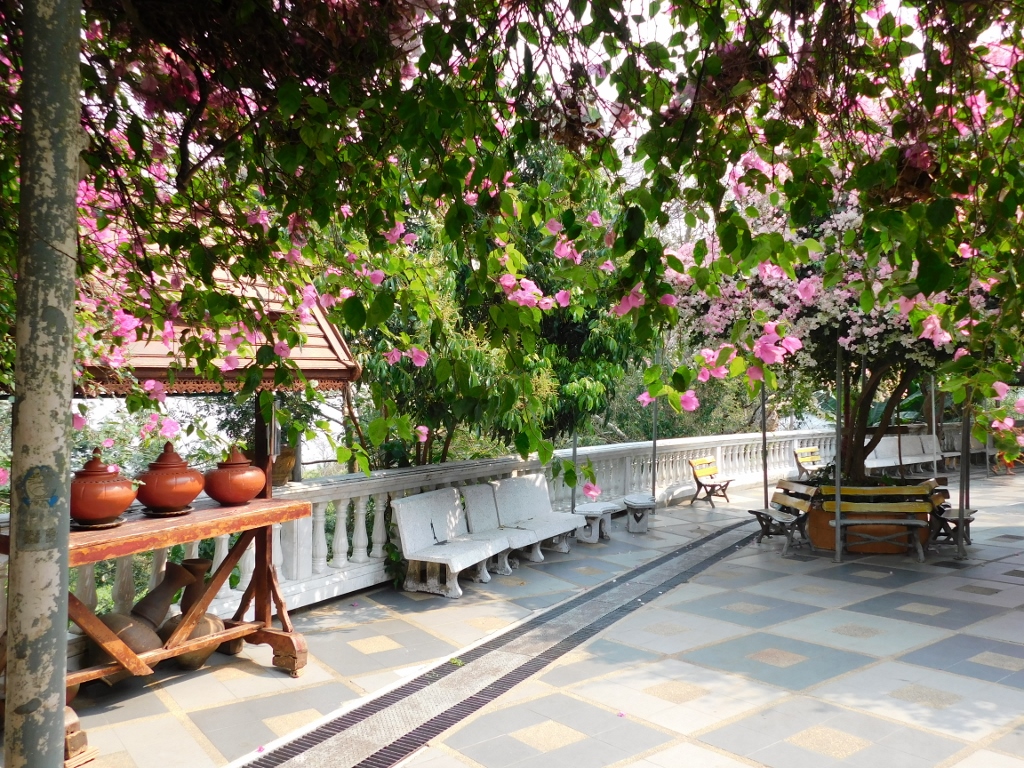 Wat Doi Suthep, a detail
Wat Doi Suthep, a detail
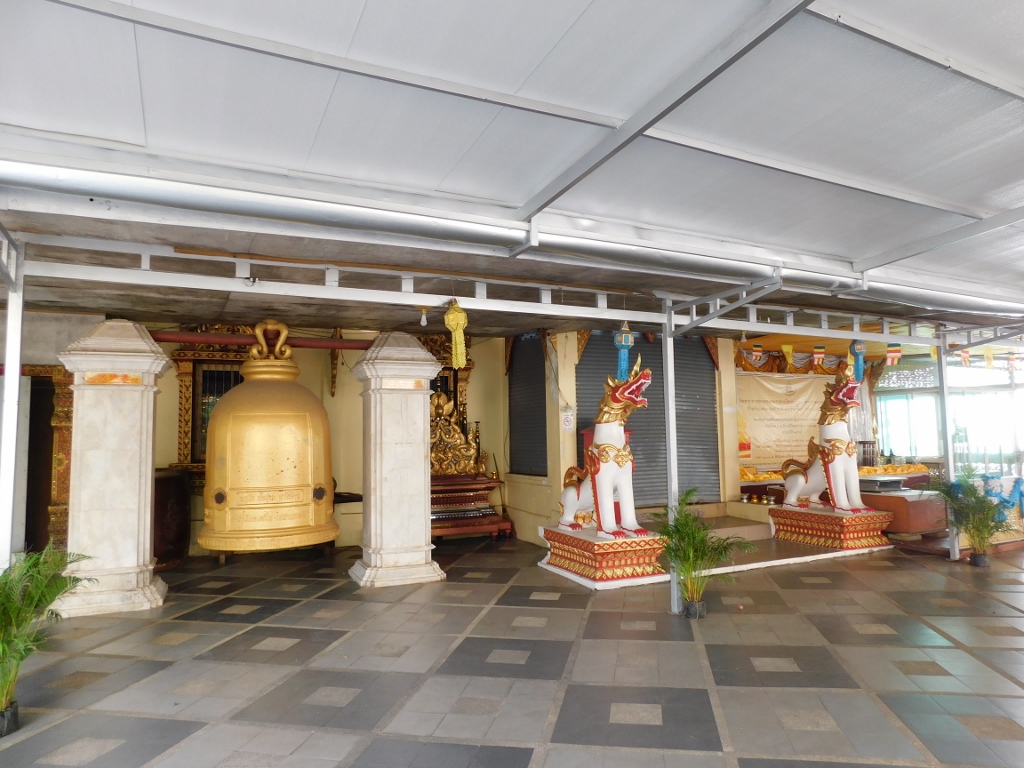 Wat Doi Suthep, a detail
Wat Doi Suthep, a detail
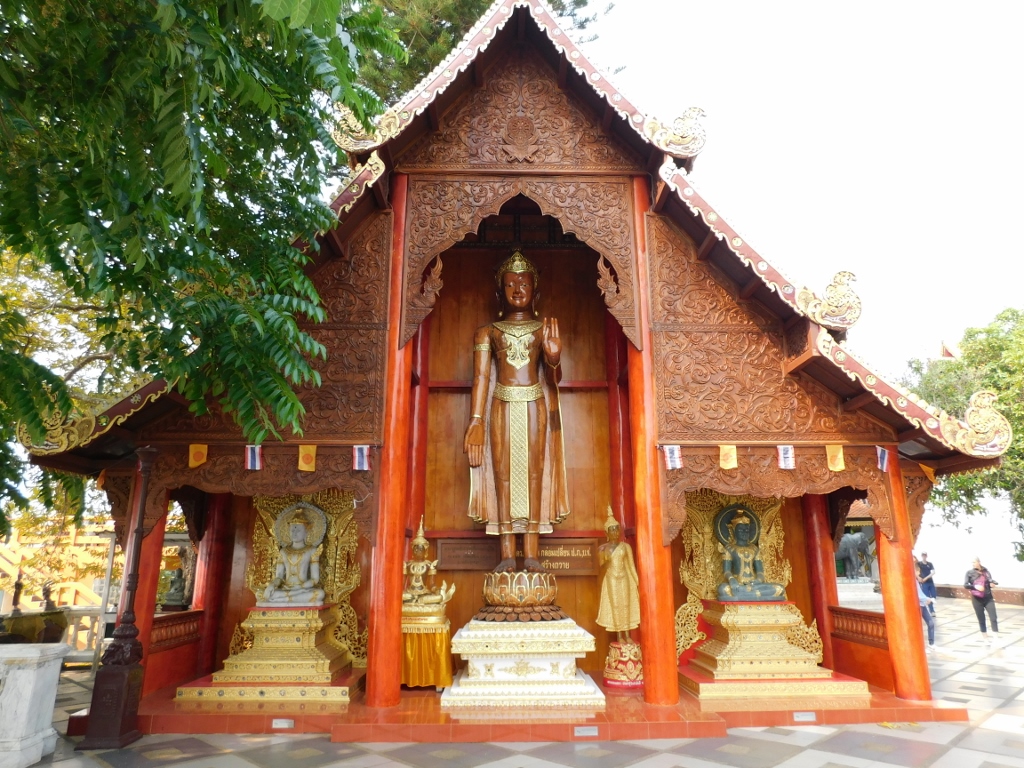 Wat Doi Suthep, a detail
Wat Doi Suthep, a detail
In some parts, the platform has terraces with a balustrade from which you can look at the surroundings of the temple. At one point, I could see a dense forest covering a steep slope and I thought how fortunate it was that I didn’t attempt to reach the temple on foot.
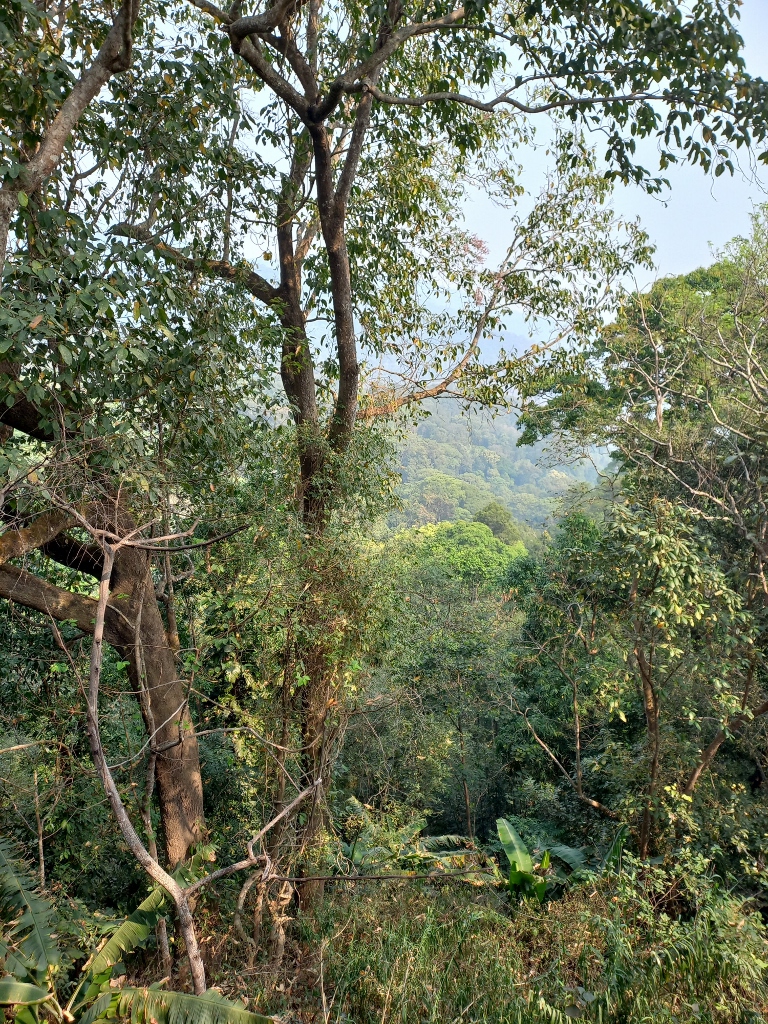 Surroundings of Wat Doi Suthep
Surroundings of Wat Doi Suthep
However, in other places, during fine weather, when it’s clear and not too humid, you can get a beautiful view of Chiang Mai. Unfortunately, that wasn’t the case during my visit in early March 2023.
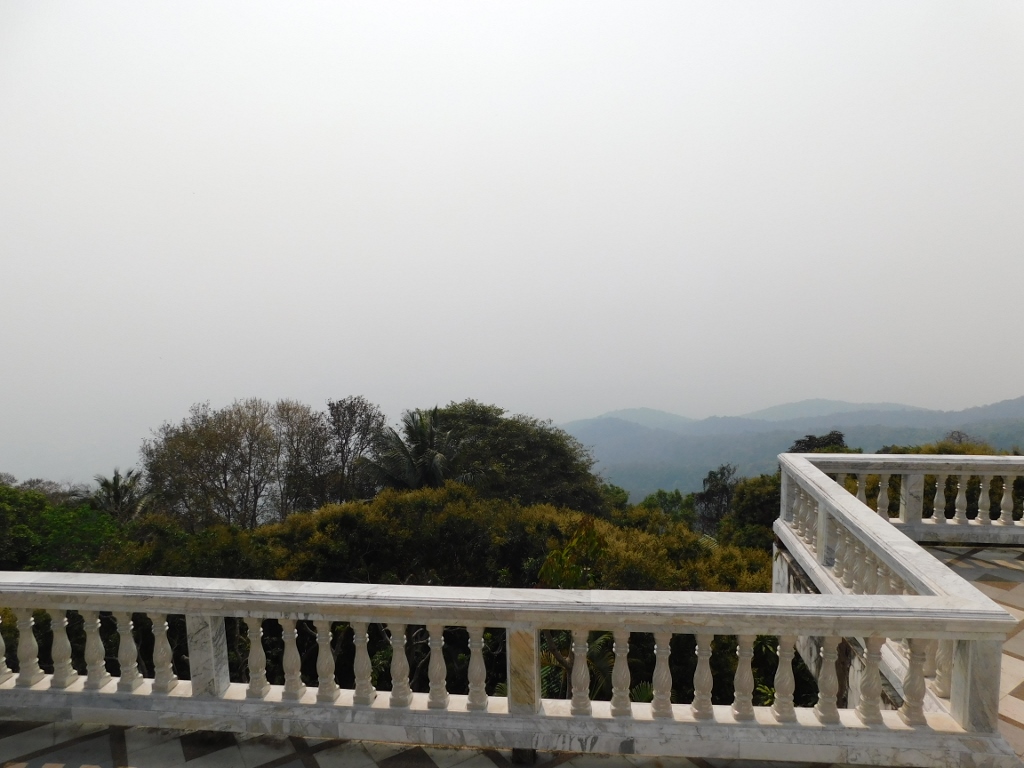 Surroundings of Wat Doi Suthep
Surroundings of Wat Doi Suthep
I strolled a bit more, soon reaching another part of the temple, across from those bells that shouldn’t be touched. In addition to various figures around the shrine, there were also guardian dragons at the entrance with lizard-like bodies. As far as I understand, the English word used for them has no connection to the Thai word, but in any case, it is the word “Mom.” Perhaps because when it comes to protecting their offspring, moms are the fiercest guardians.
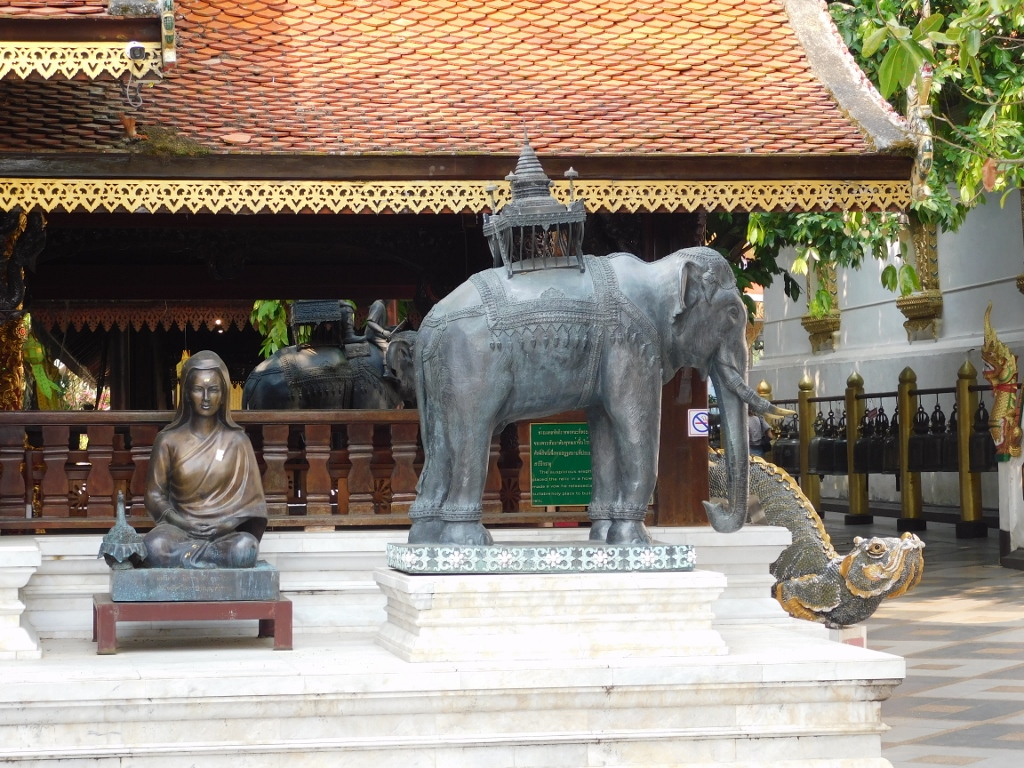 Wat Doi Suthep, a detail, a Mom is to the right
Wat Doi Suthep, a detail, a Mom is to the right
 One of two Moms – this one has open jaws
One of two Moms – this one has open jaws
Now came the time for me to slowly start making my way back from where I came. This meant passing by the bells again, in front of the row of viharas and descending the flight of stairs. Although they still appeared impressive and almost intimidating, this time it was easier going down.
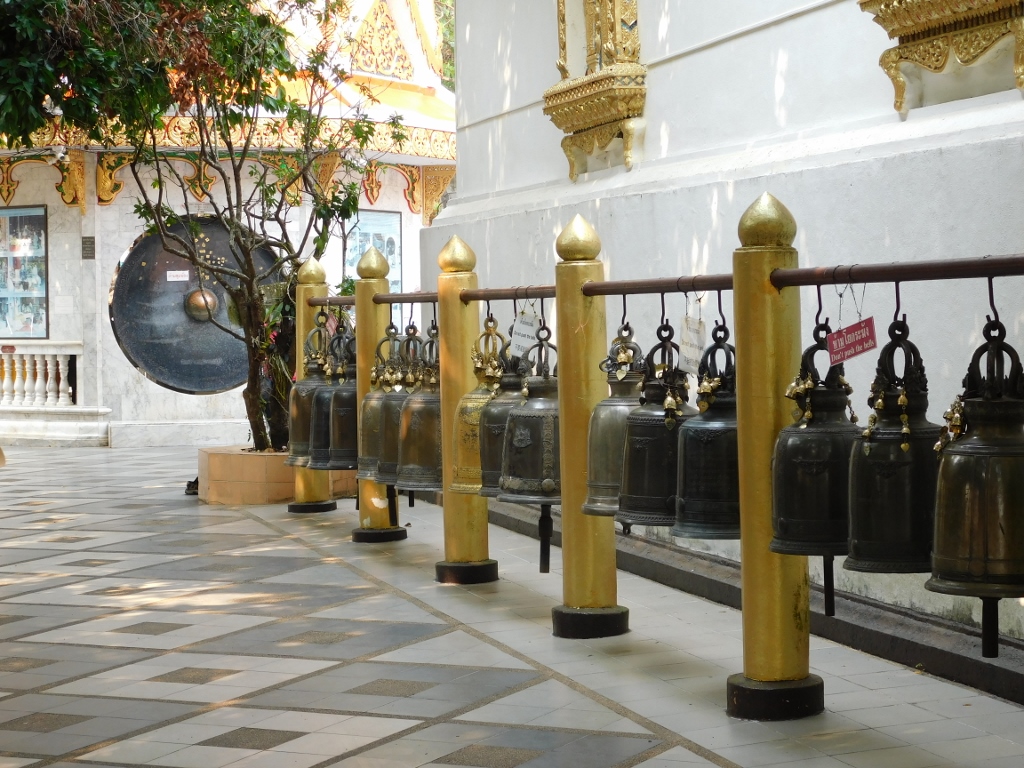 Wat Doi Suthep, a detail
Wat Doi Suthep, a detail
 Wat Doi Suthep, a detail
Wat Doi Suthep, a detail
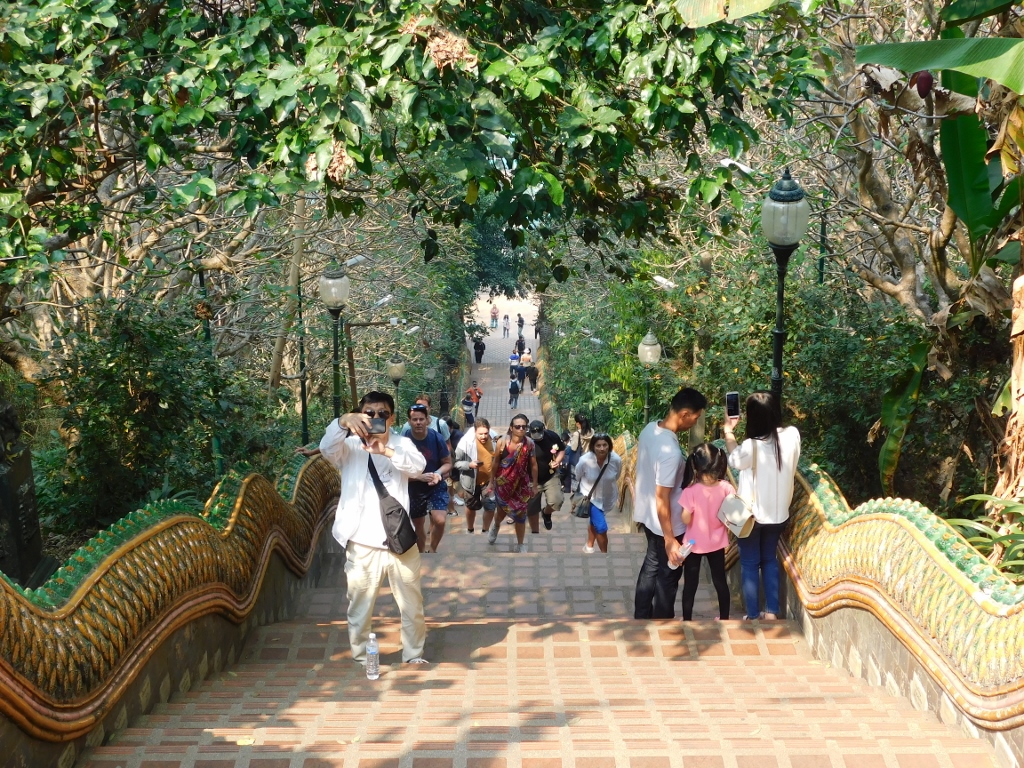 Wat Doi Suthep, a detail
Wat Doi Suthep, a detail
After had I finished with the very nice tour of the Wat Doi Suthep temple, I reached the expansion in the asphalt road where a bunch of songthaews were parked. Since I was only going a part of the way back to Chiang Mai, I wasn’t keen on paying a high price, so I decided to hop into one and wait for it to fill up.
 Interior of the rot daang, the local version of the songthaew
Interior of the rot daang, the local version of the songthaew
There was already one man seated inside and after some time ten of us gathered and the vehicle set off.
About 6.5 km later, I got off at another temple I wanted to visit, Wat Pha Lat, which is also situated on the slopes west of Chiang Mai. In fact, there is another shrine right by the road and you have to descend a few hundred metres along a side road to reach the temple.
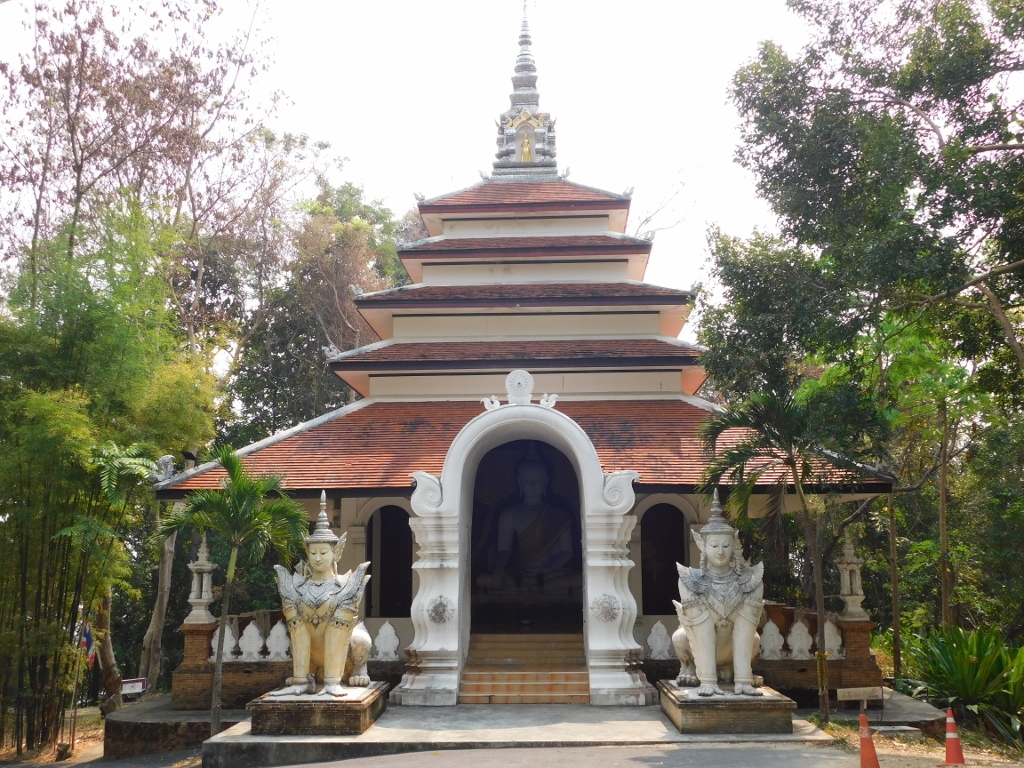 Shrine close to Wat Pha Lat
Shrine close to Wat Pha Lat
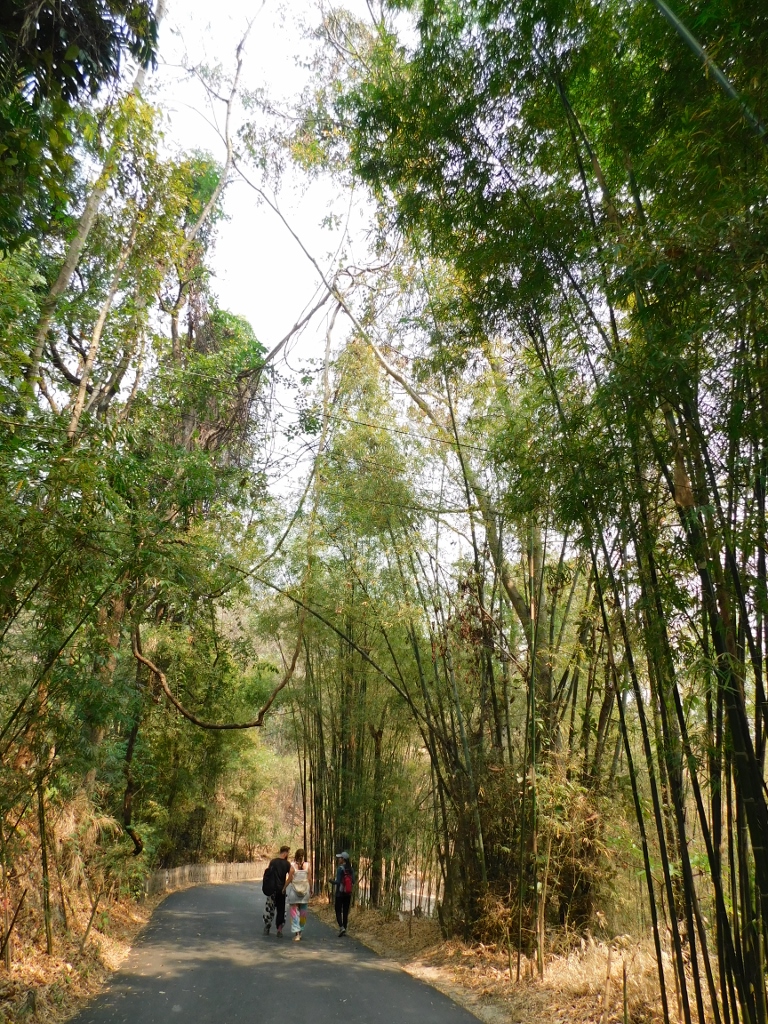 Road towards Wat Pha Lat
Road towards Wat Pha Lat
When you get close to the temple, there are several buildings that I believe monks use. In any case, everything I saw here, set amidst the forest, was extremely picturesque and interesting. It was very well-maintained, regardless of its concrete function.
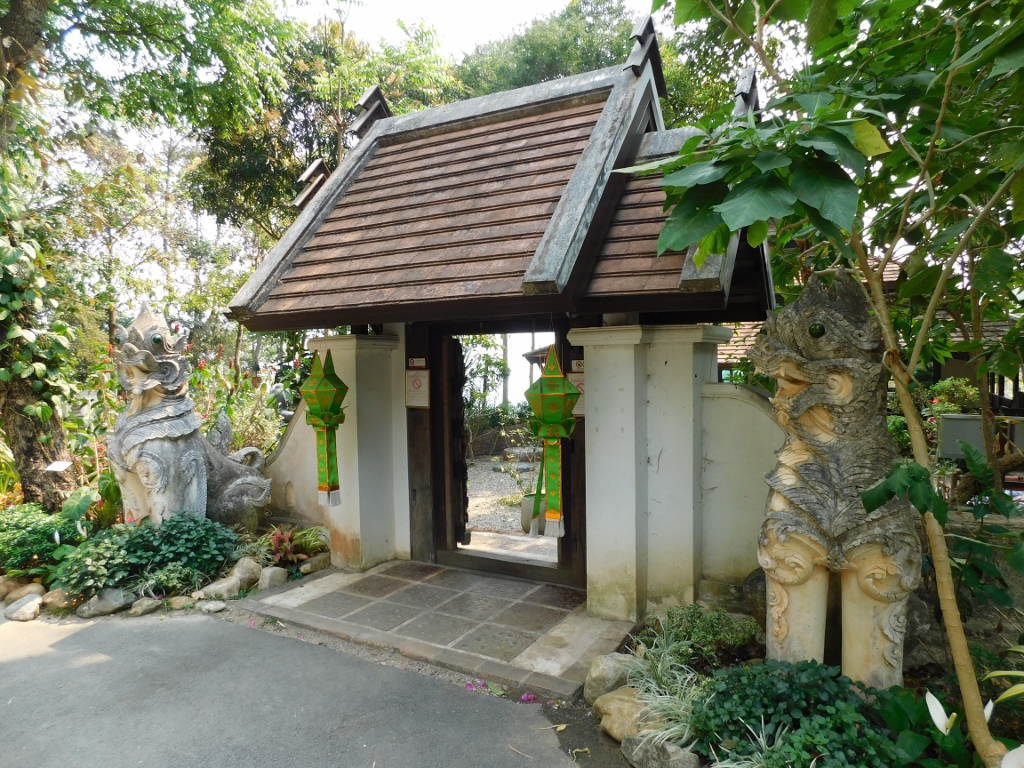 Details at the Wat Pha Lat temple
Details at the Wat Pha Lat temple
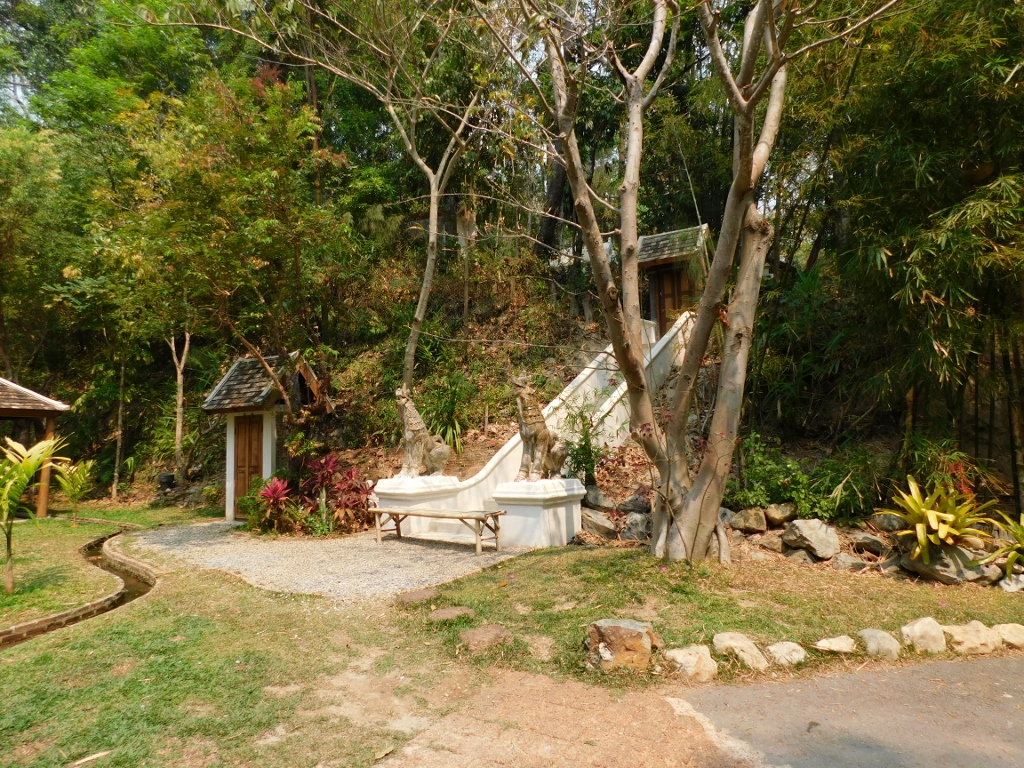 Details at the Wat Pha Lat temple
Details at the Wat Pha Lat temple
The Wat Pha Lat temple was rarely visited until a few years ago, so I had limited information about it. However, that didn’t bother me at all. On the contrary, in the end, this might have been the temple that I liked the most. Not because of the grandiosity of the structures – there were much more impressive ones elsewhere – but the tranquillity felt there, thanks to the fact that the temple complex is nestled in the middle of the forest, made this place stand out from the other temples I visited during my stay in Thailand. Just take a look at what it was like when I entered the inner courtyard of the temple complex.
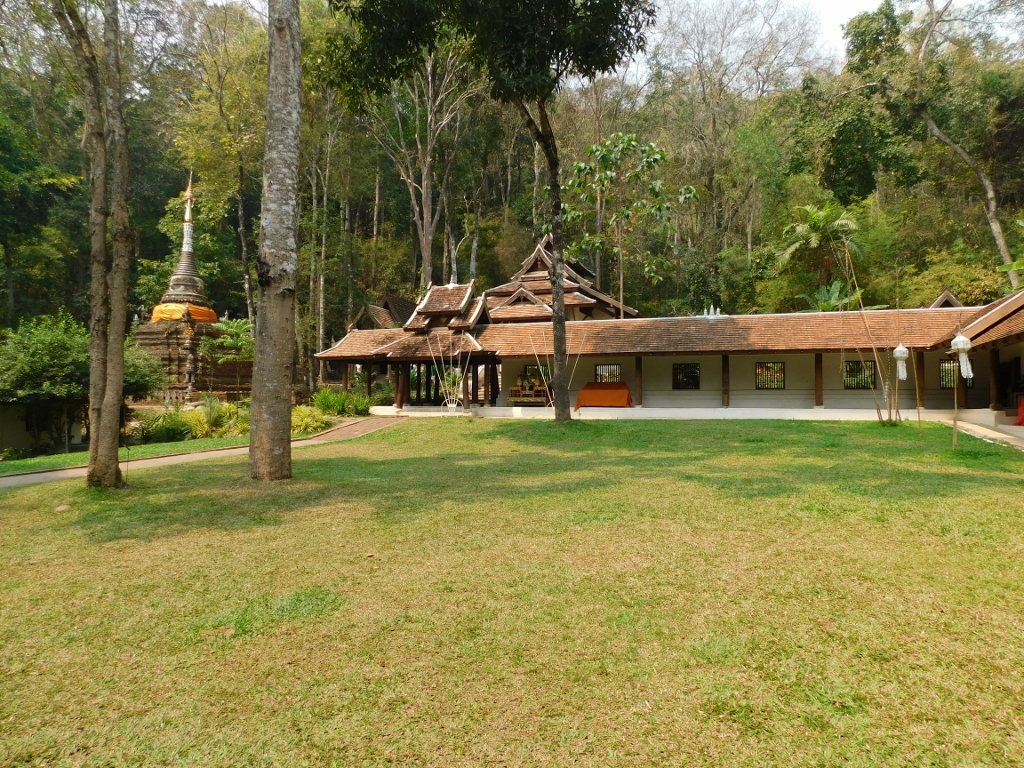 Wat Pha Lat
Wat Pha Lat
 Wat Pha Lat
Wat Pha Lat
The exact construction date of this temple is unknown, but it is also associated with the legend of the white elephant that essentially determined the location of Wat Doi Suthep. Climbing uphill to the spot where it eventually breathed its last and Wat Doi Suthep was established later, the elephant stopped to rest at this very place. The ruler of the Lan Na kingdom at that time, King Kue Na (1355-1385), ordered the construction of a temple here as well.
Today, there are several structures that are evidently of a more recent date, but this in no way diminishes the beauty of the place. On the contrary, I found it intriguing to enter each of these buildings and examine the details. The wood used in the construction further emphasises the connection with the surrounding forest.
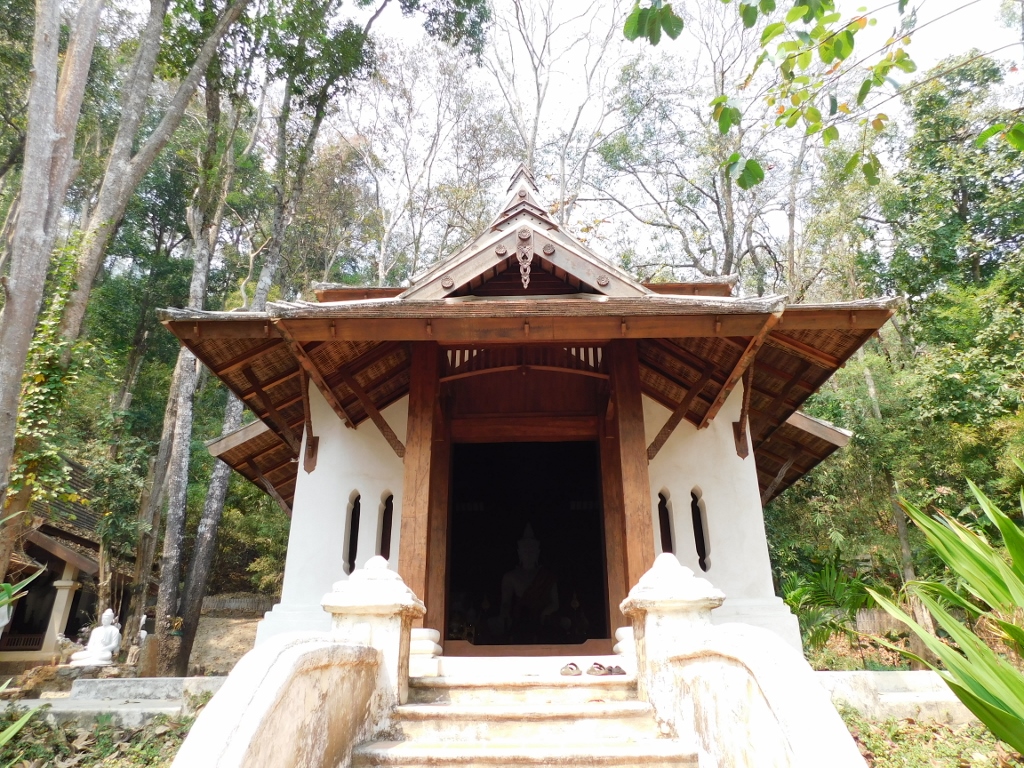 Wat Pha Lat, a detail
Wat Pha Lat, a detail
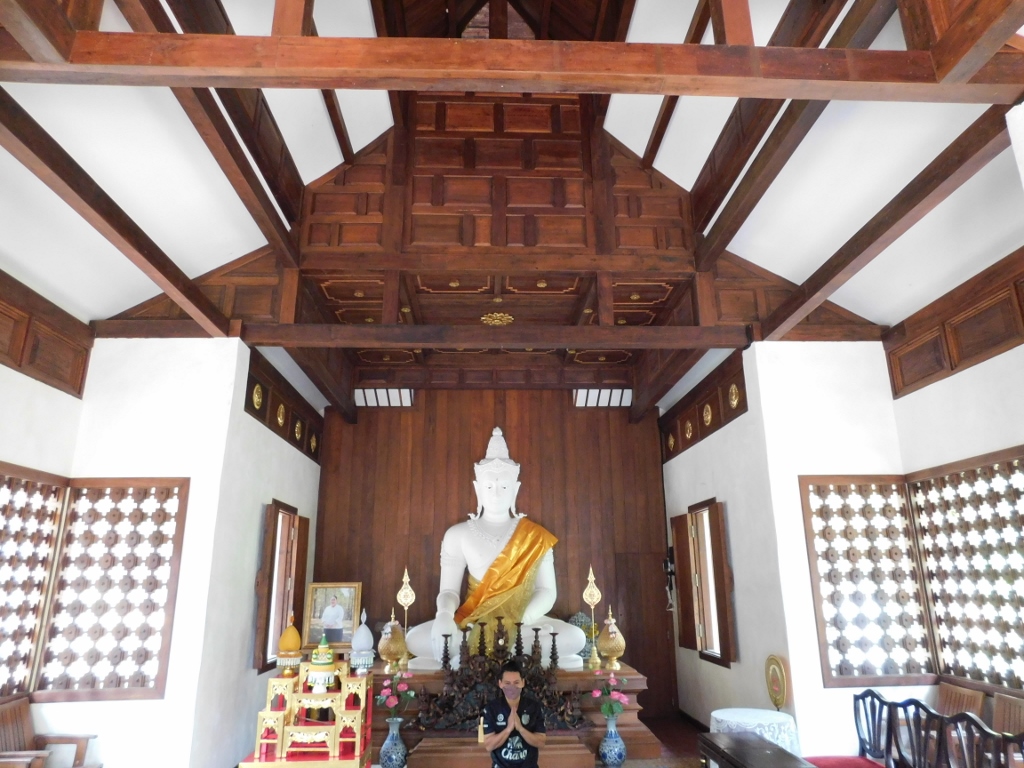 Wat Pha Lat, a detail
Wat Pha Lat, a detail
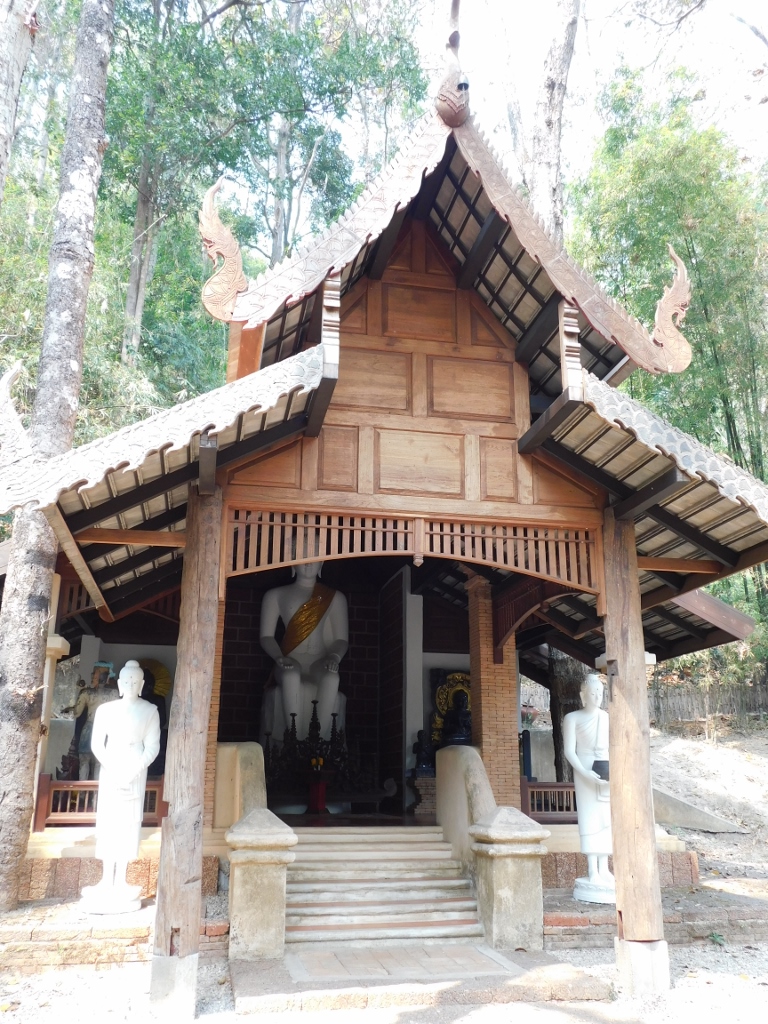 Wat Pha Lat, a detail
Wat Pha Lat, a detail
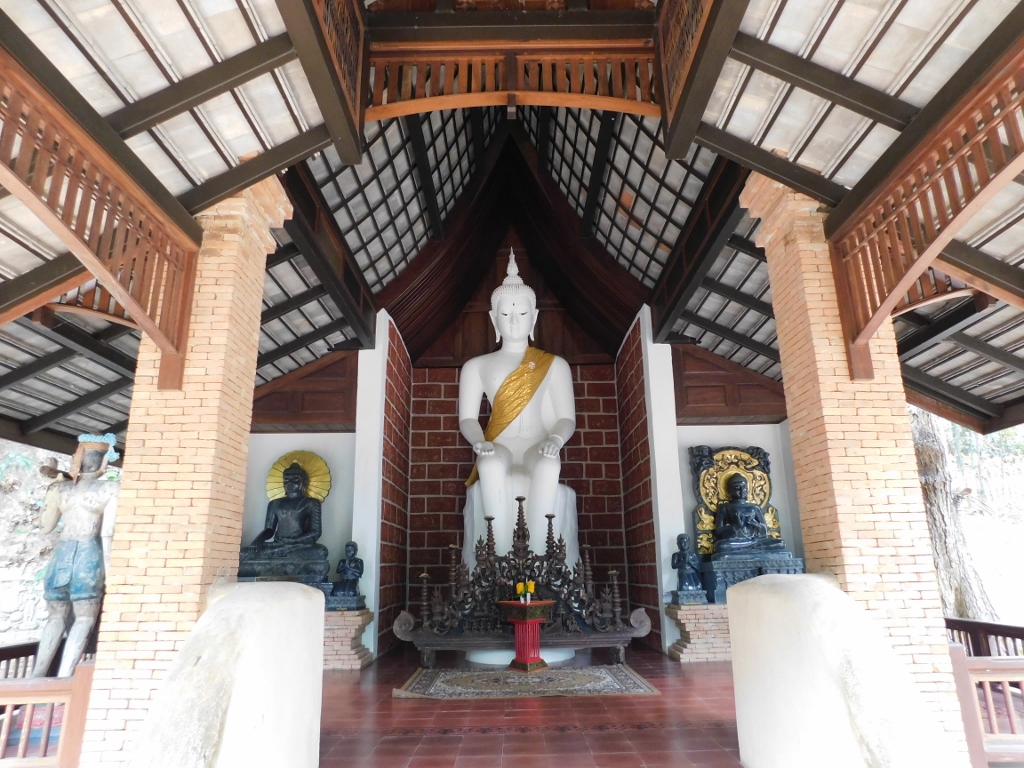 Wat Pha Lat, a detail
Wat Pha Lat, a detail
There are also various smaller shrines, but the most important structure is the main chedi.
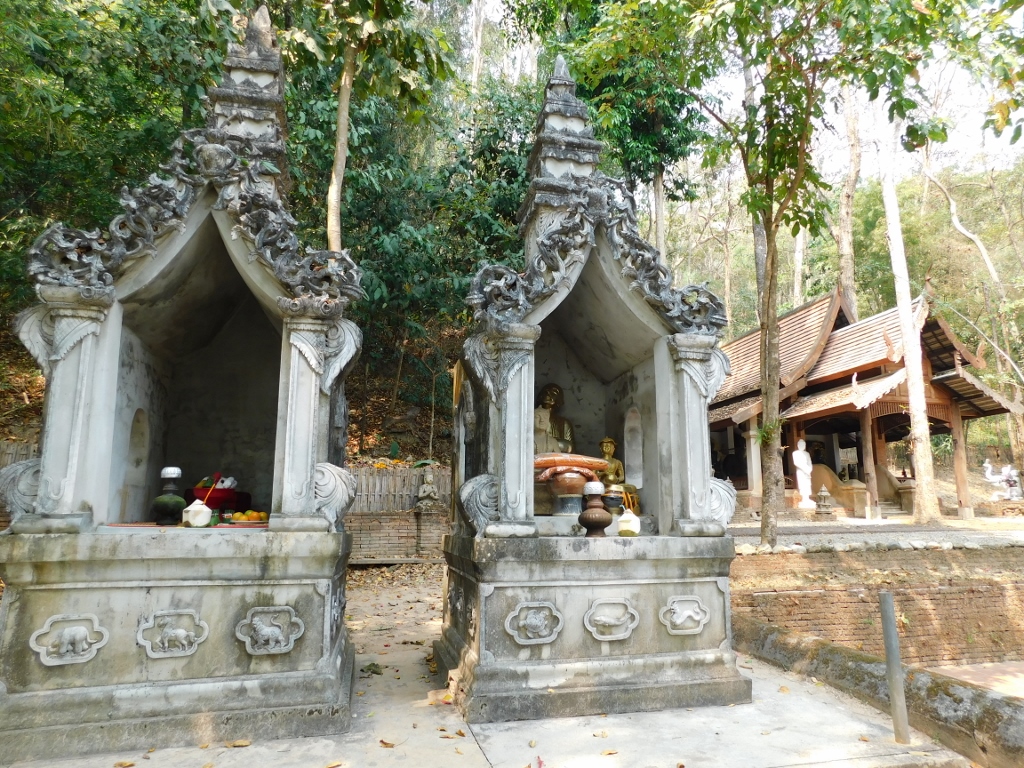 Wat Pha Lat, a detail
Wat Pha Lat, a detail
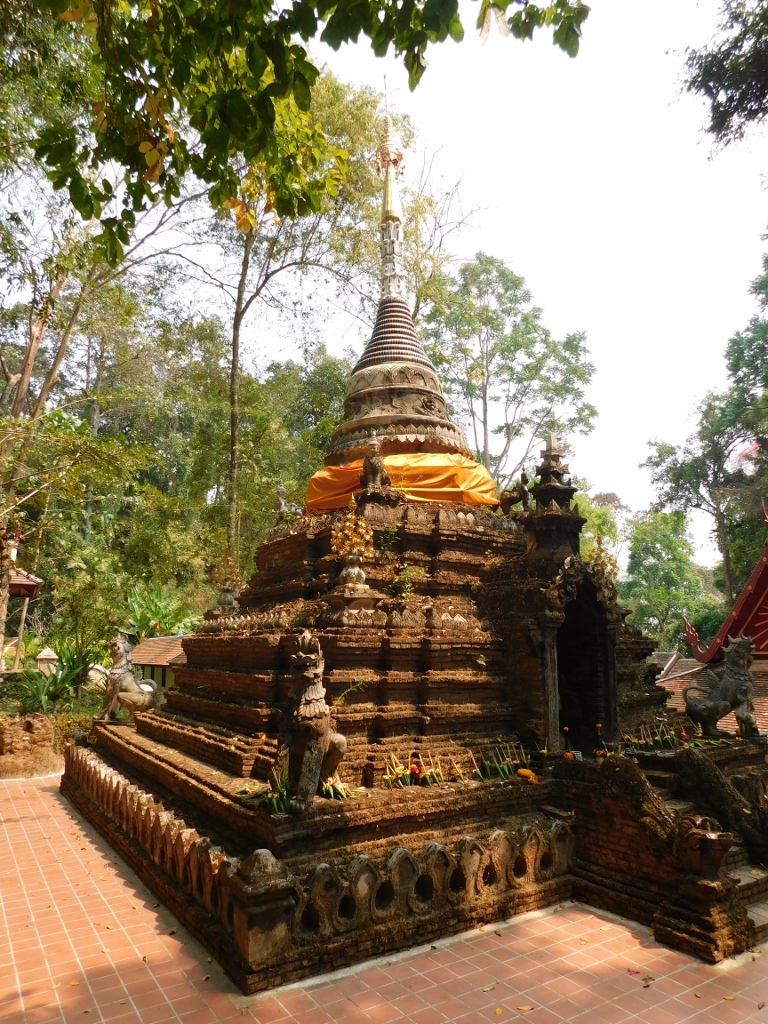 Wat Pha Lat, main chedi
Wat Pha Lat, main chedi
While the top of the chedi is round, in line with Burmese influence, the lower part has a square plan. There are lion figures at the corners of the base and there are also deities crafted in the stucco technique.
 Wat Pha Lat, main chedi, a detail
Wat Pha Lat, main chedi, a detail
On the southern side, there is a niche with a Buddha figure, forming a small shrine. In accordance with this, worshippers leave their offerings there.
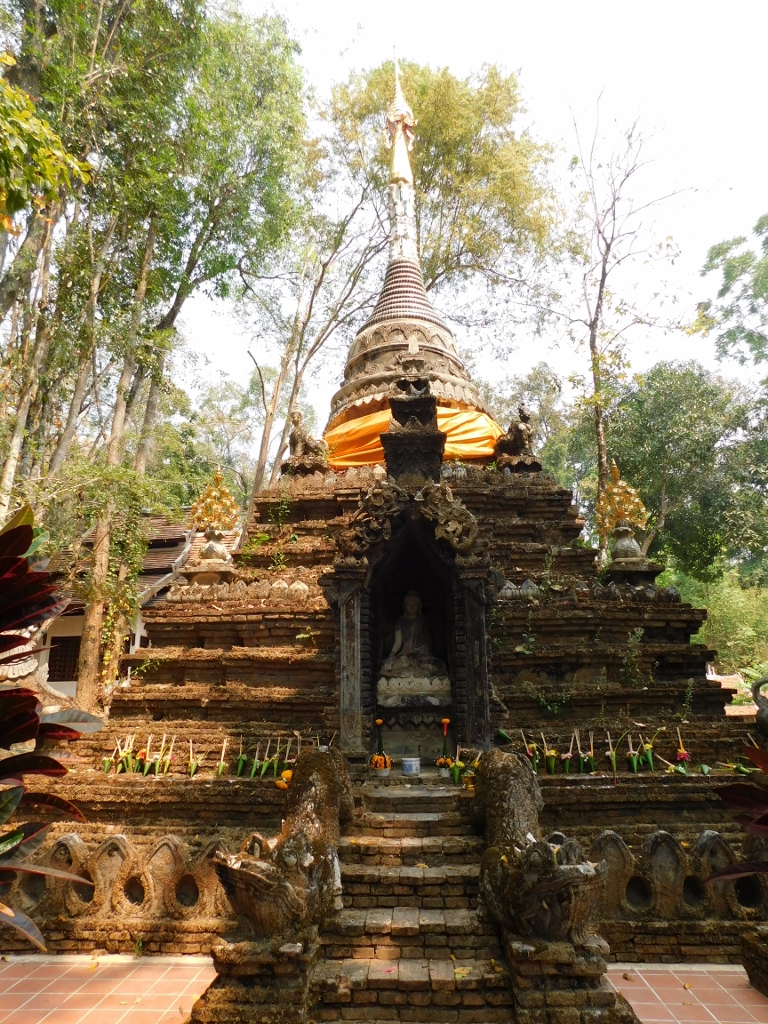 Wat Pha Lat, main chedi
Wat Pha Lat, main chedi
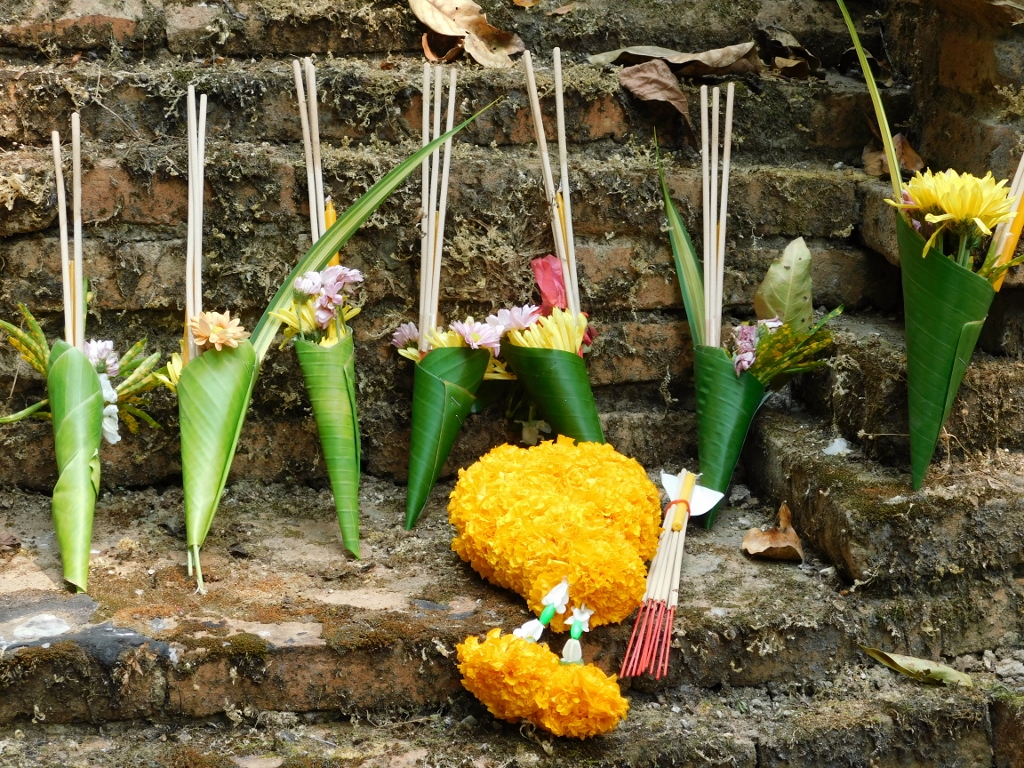 Wat Pha Lat, main chedi, a detail
Wat Pha Lat, main chedi, a detail
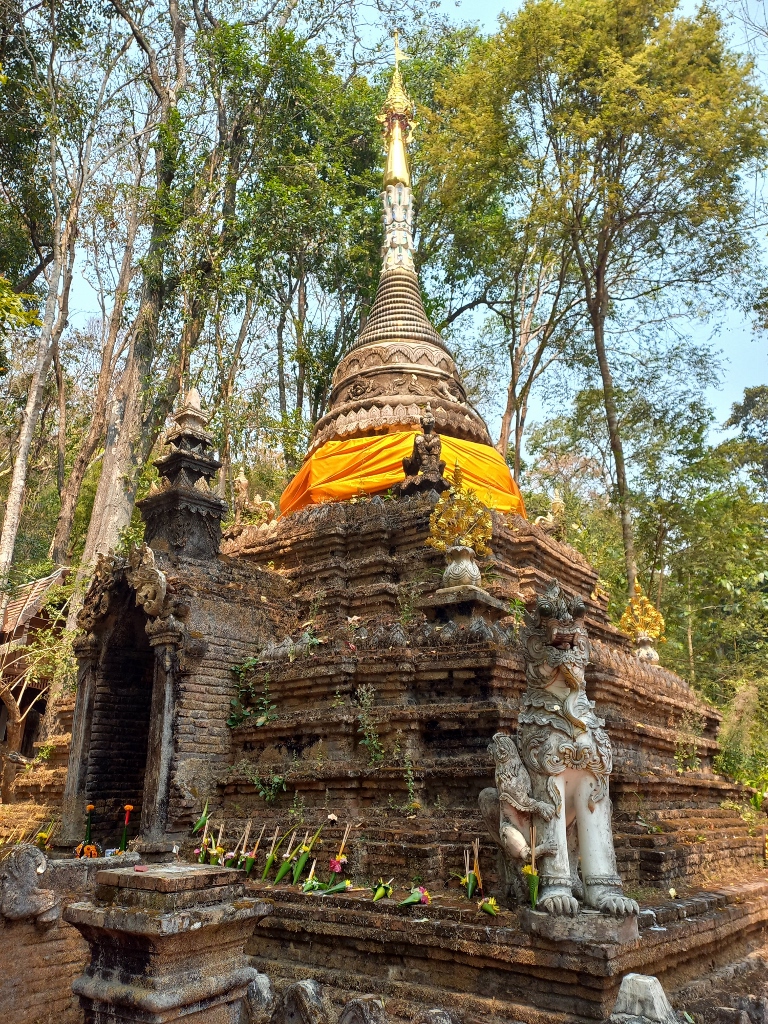 Wat Pha Lat, main chedi
Wat Pha Lat, main chedi
Around the chedi, there is a path known in South Asian religions as the “Pradakshina path.” It is a path that encircles important sacred entities and worshippers are supposed to move in a clockwise direction.
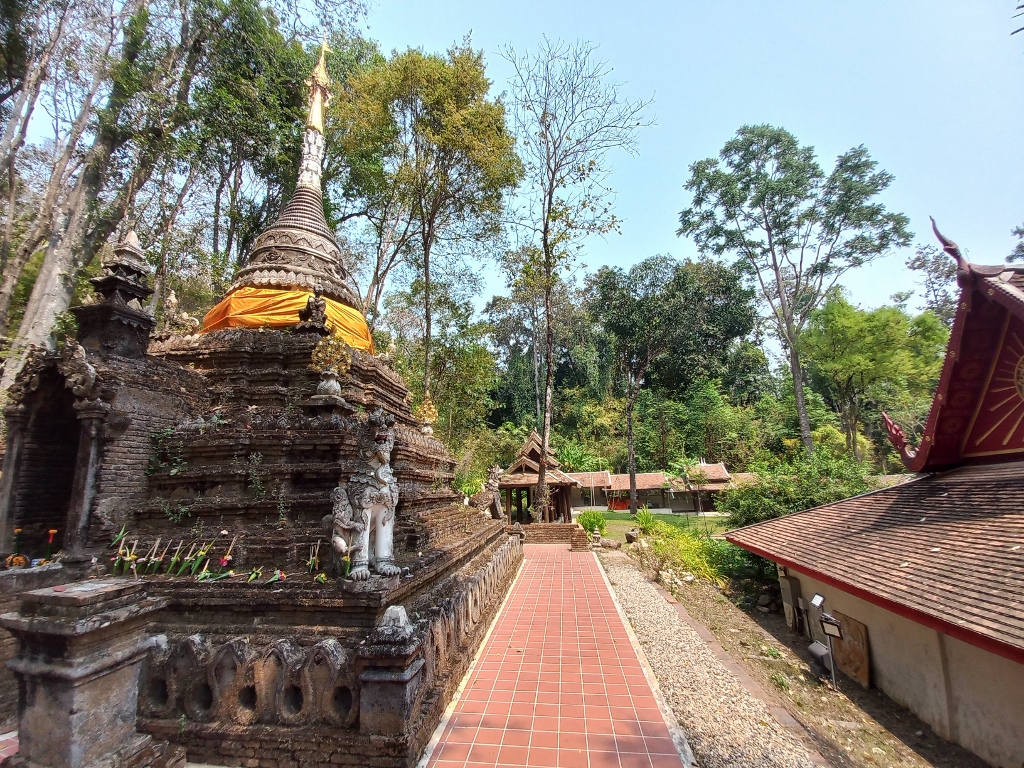 Wat Pha Lat, main chedi, a detail
Wat Pha Lat, main chedi, a detail
Then I descended towards another structure, the rear part of which is visible in the previous photo. I entered there in order to see the details.
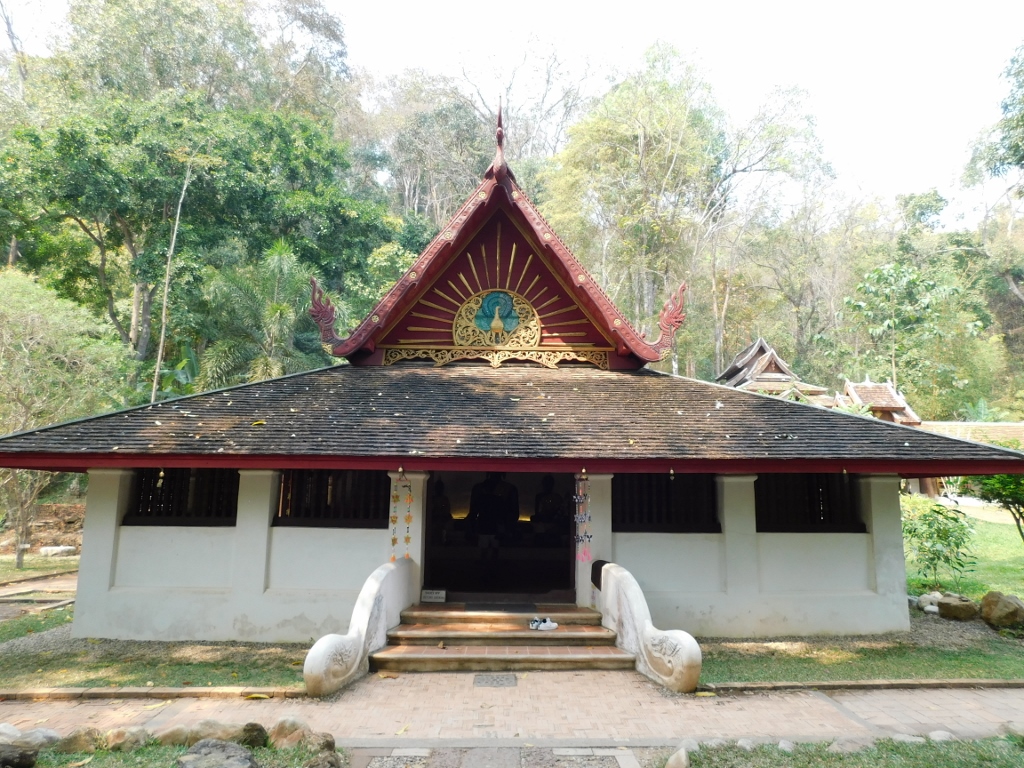 Wat Pha Lat, a detail
Wat Pha Lat, a detail
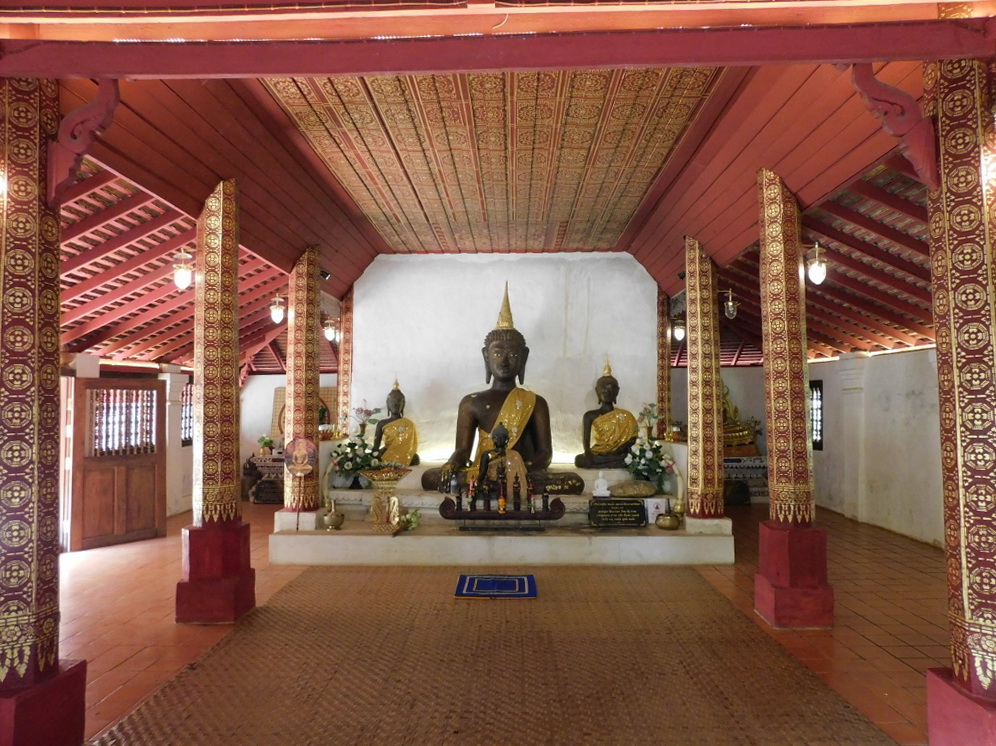 Wat Pha Lat, a detail
Wat Pha Lat, a detail
In front of this vihara, there are stairs leading to a broader path from where the temple complex can be further explored. Various “guardians” of this sacred place and its structures are placed all around.
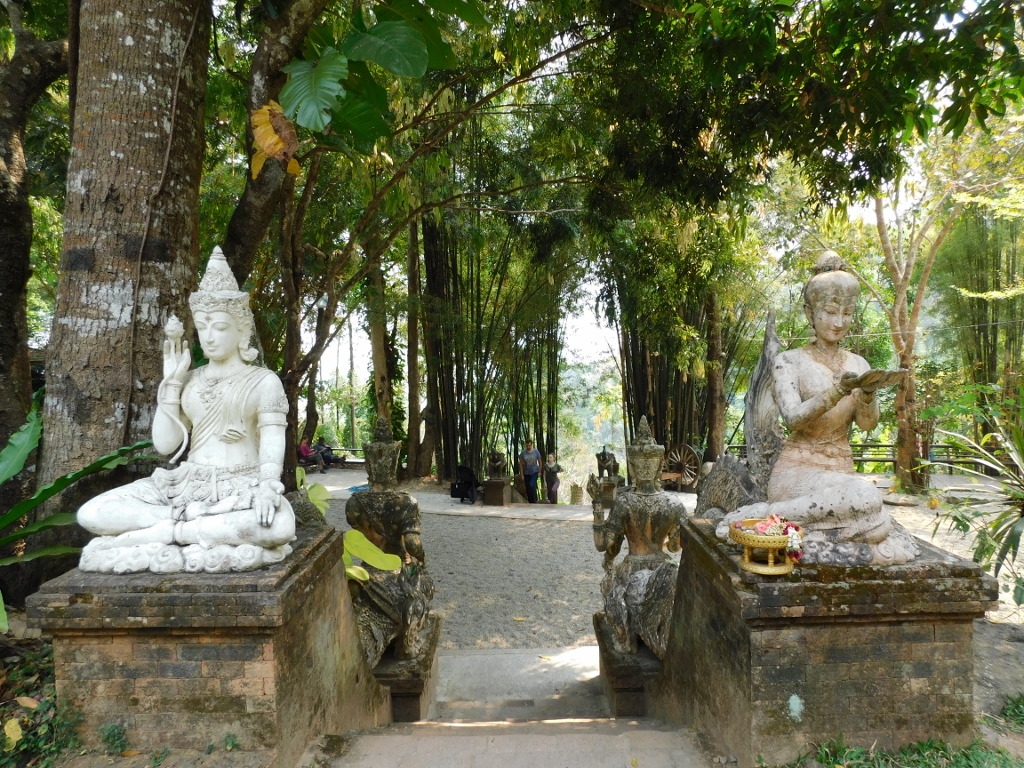 Wat Pha Lat, a detail
Wat Pha Lat, a detail
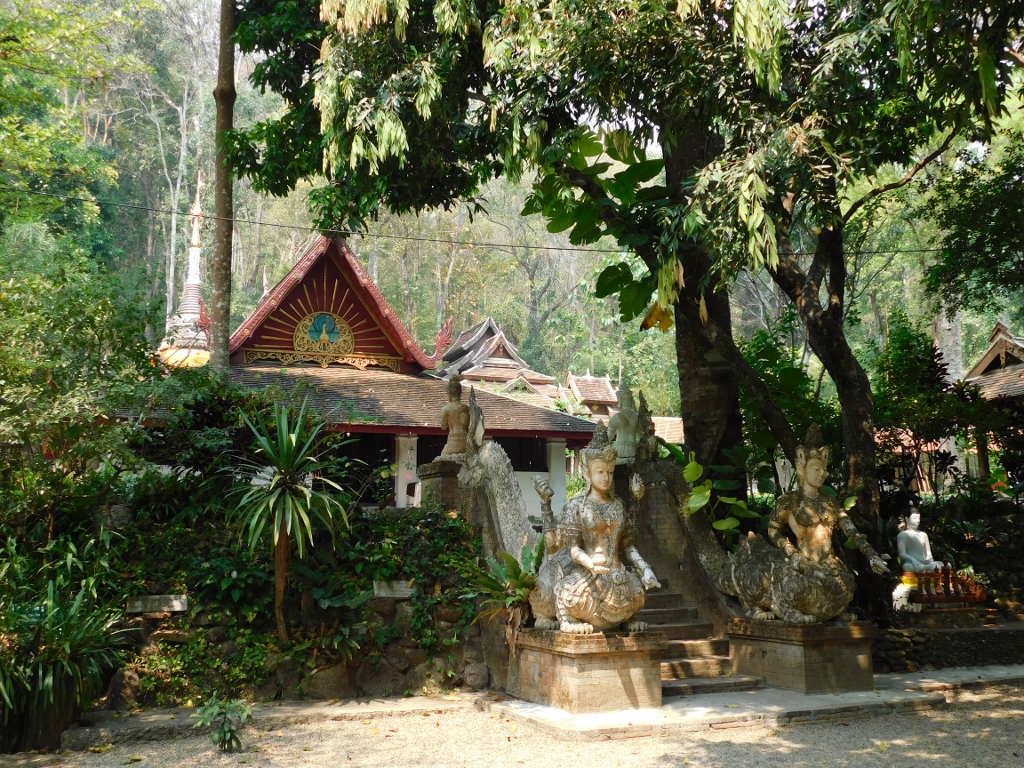 Wat Pha Lat, a detail
Wat Pha Lat, a detail
When I say that the temple complex can be further explored, I actually mean a couple of other structures because this is not a large place.
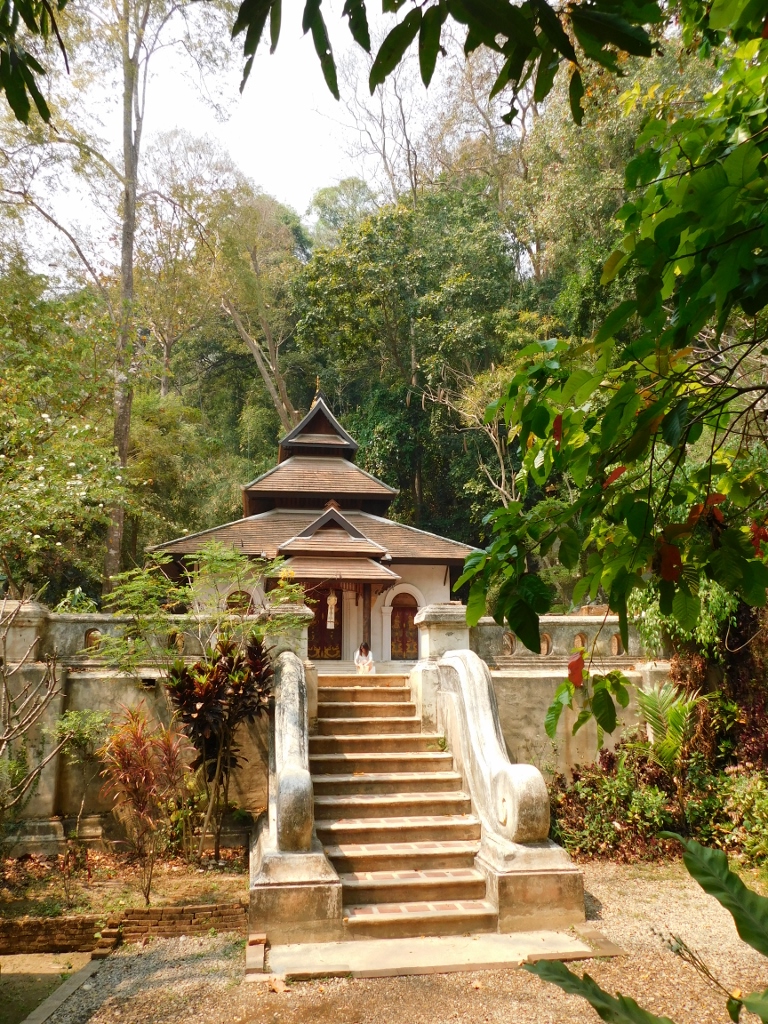 Wat Pha Lat, a detail
Wat Pha Lat, a detail
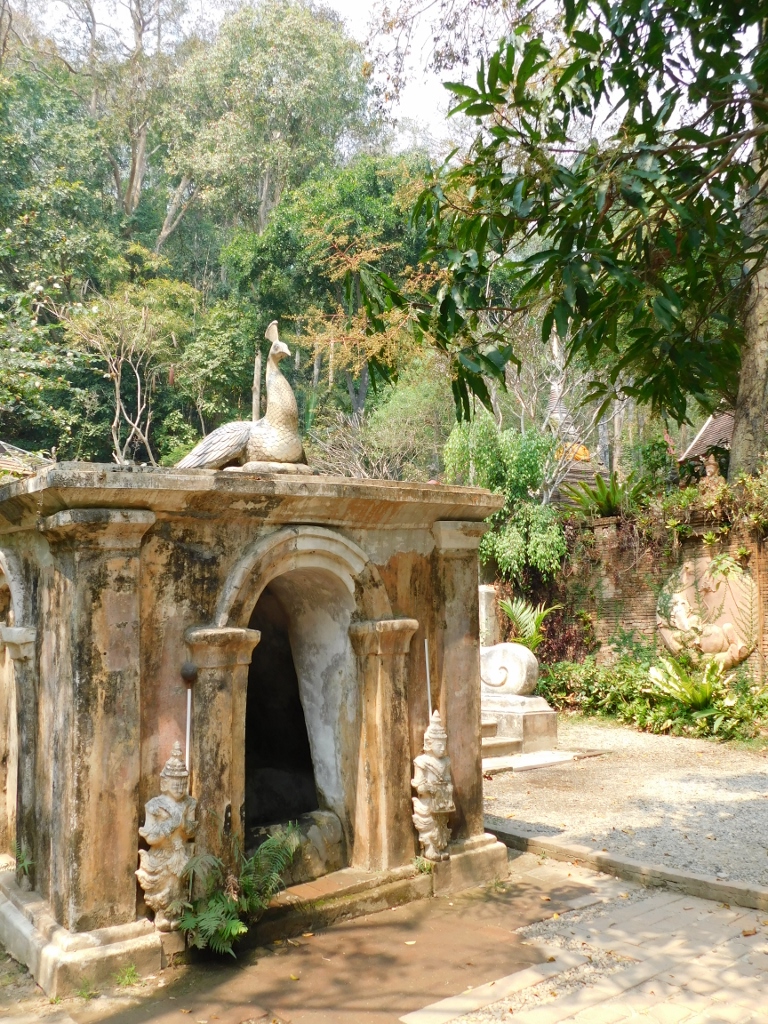 Wat Pha Lat, a detail
Wat Pha Lat, a detail
Within the complex, there is a small stream and on the other side, I saw another interesting structure that, judging by some photos I could see online, has been recently renovated. It is evidently built against the natural rocks in the area. Inside, there are several Buddha figures in various postures.
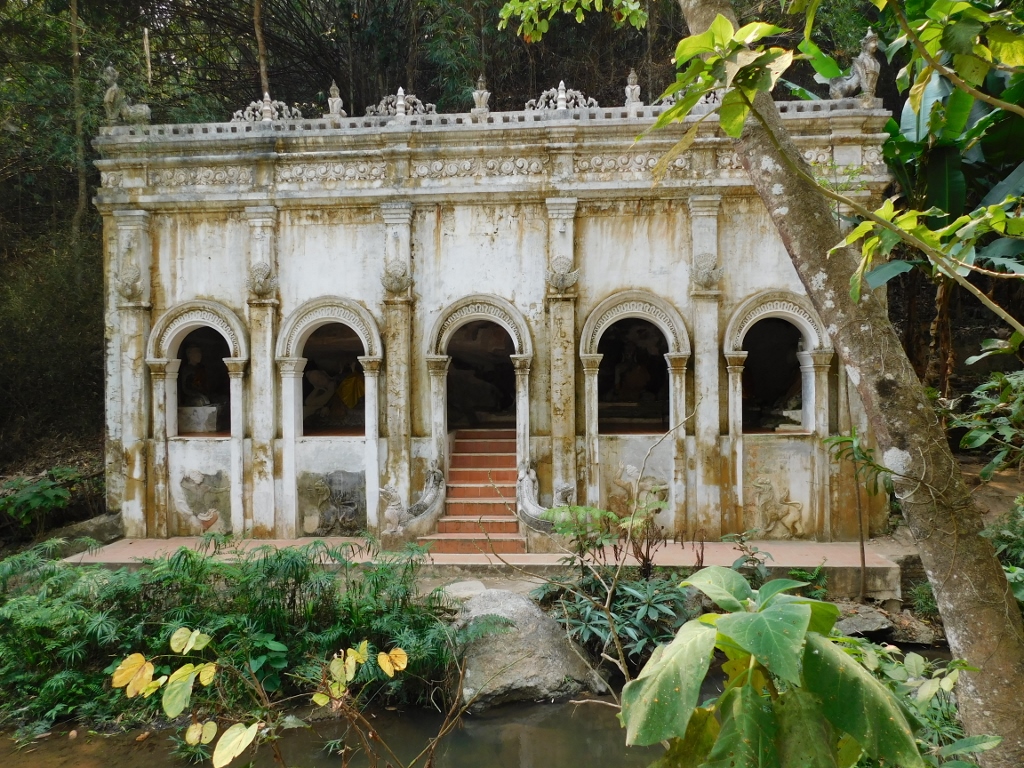 Wat Pha Lat, a detail
Wat Pha Lat, a detail
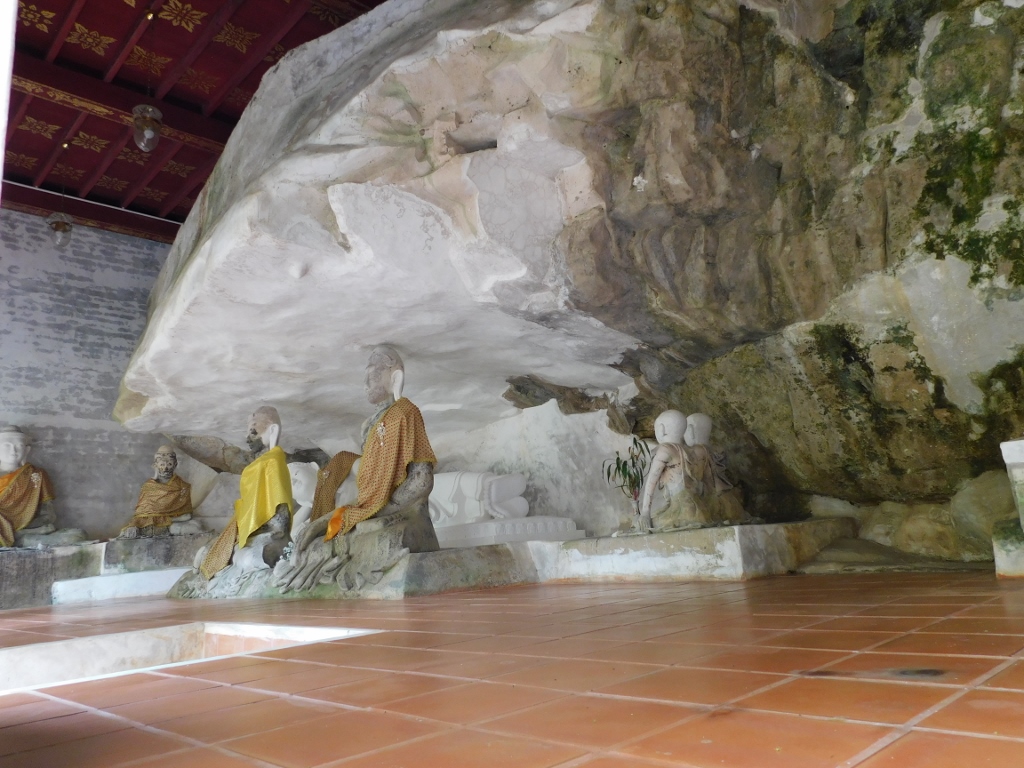 Wat Pha Lat, a detail
Wat Pha Lat, a detail
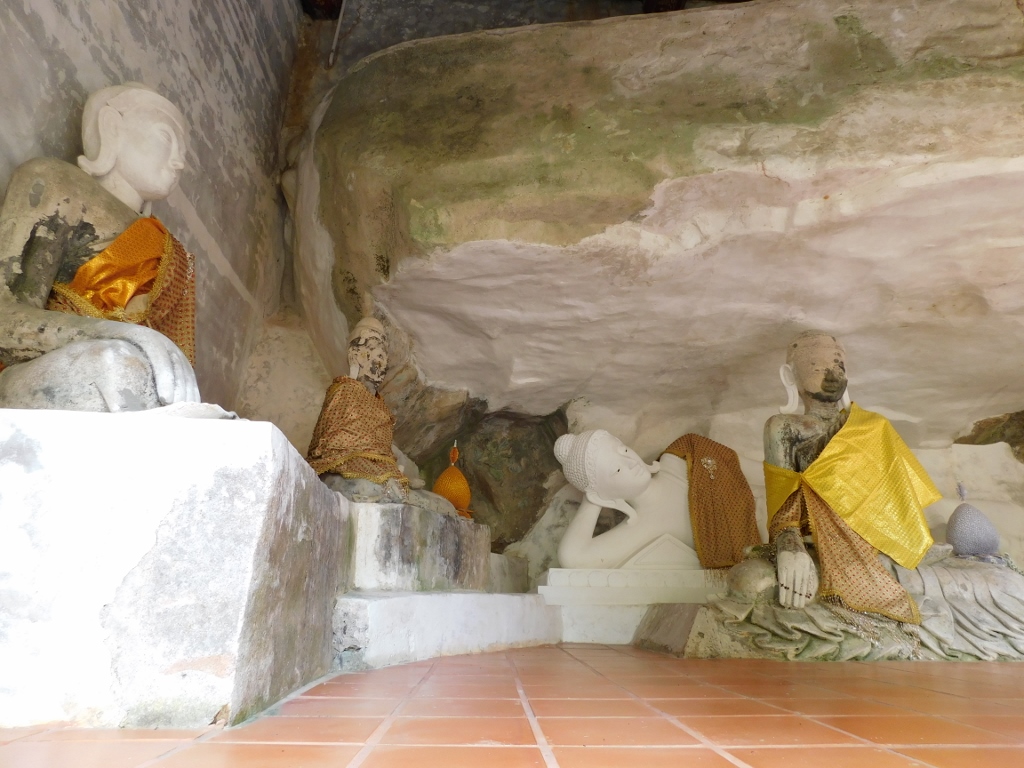 Wat Pha Lat, a detail
Wat Pha Lat, a detail
On the other side of the stream, the bed of which is covered with numerous rocks where visitors often like to walk or sit, gaze into the distance or meditate, there is a path leading somewhere downhill.
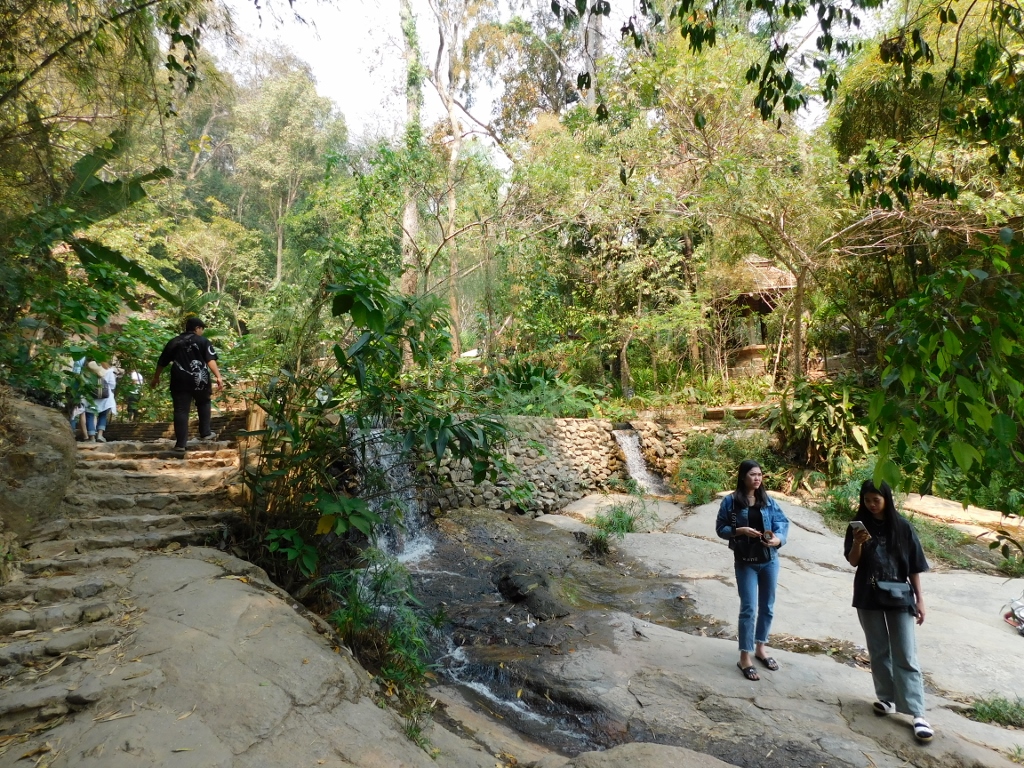 Wat Pha Lat, a detail
Wat Pha Lat, a detail
I descended only a short distance because it was starting to get quite hot and I had a lot more exploring planned, so it was wise to conserve energy for later.
Regarding meditation and prayer, there are many places here to engage in such activities, such as in a pavilion-like shrine next to the path.
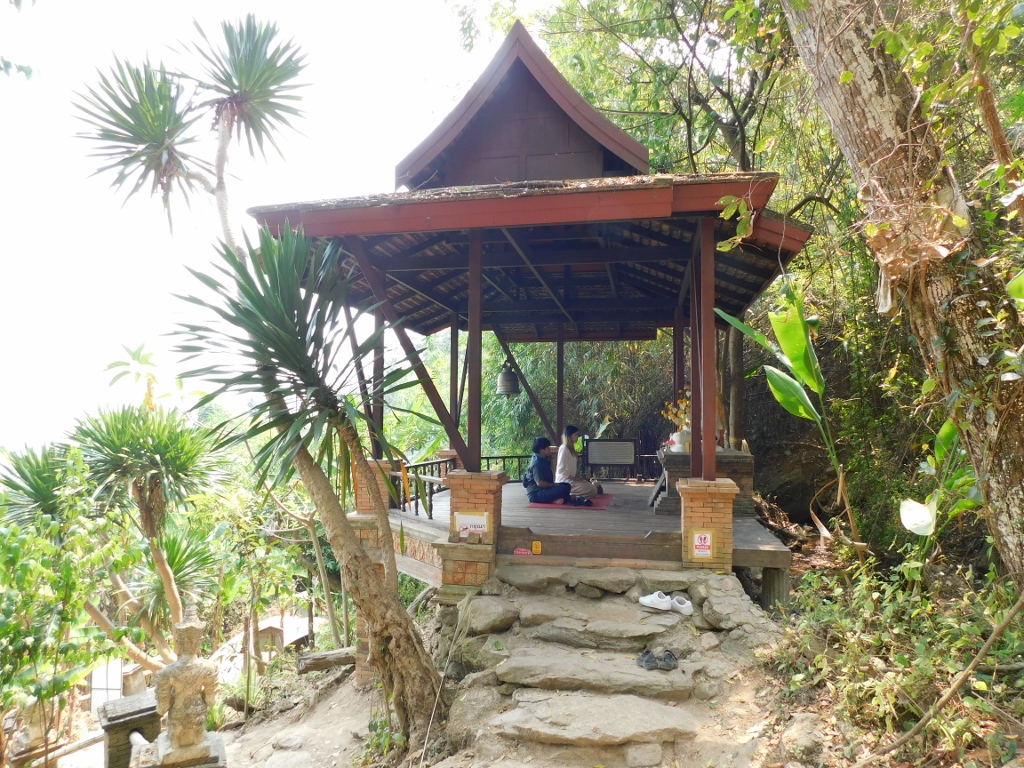 Wat Pha Lat, a detail
Wat Pha Lat, a detail
But, as I’ve said, I didn’t continue descending; instead, I turned back towards the main part of the temple, getting ready to return there.
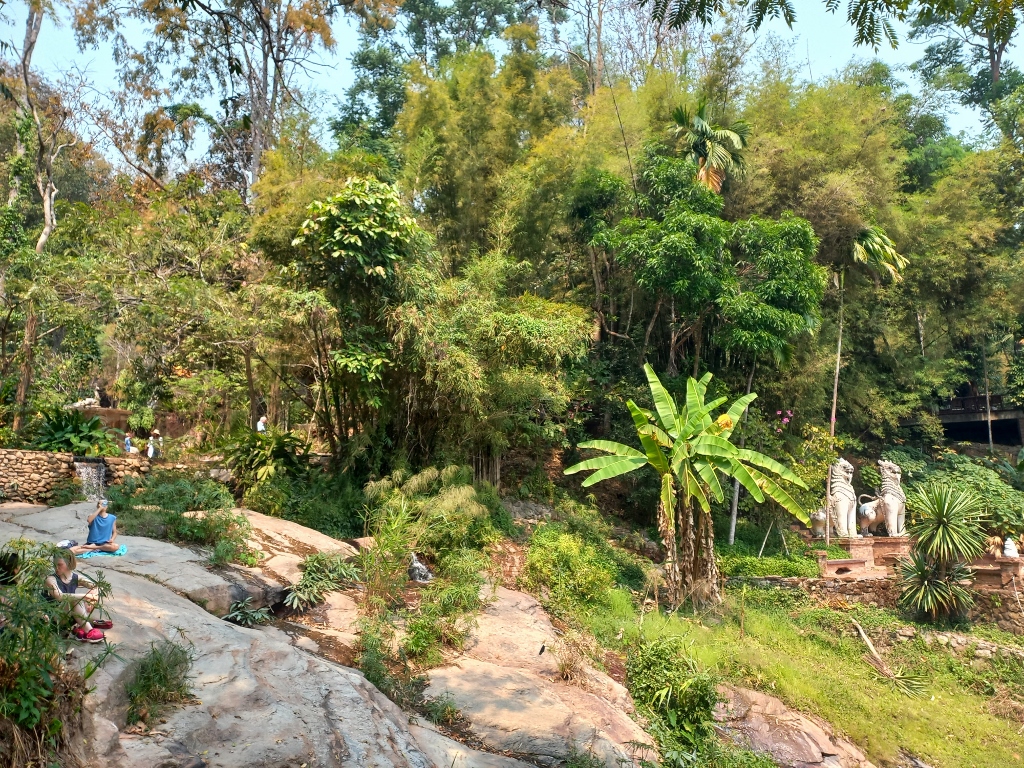 Wat Pha Lat, a detail
Wat Pha Lat, a detail
When the weather is fine, i.e., without haze due to high humidity, there is a beautiful view of the city of Chiang Mai from here. During my visit, the urban parts of the city could only be faintly discerned in the distance.
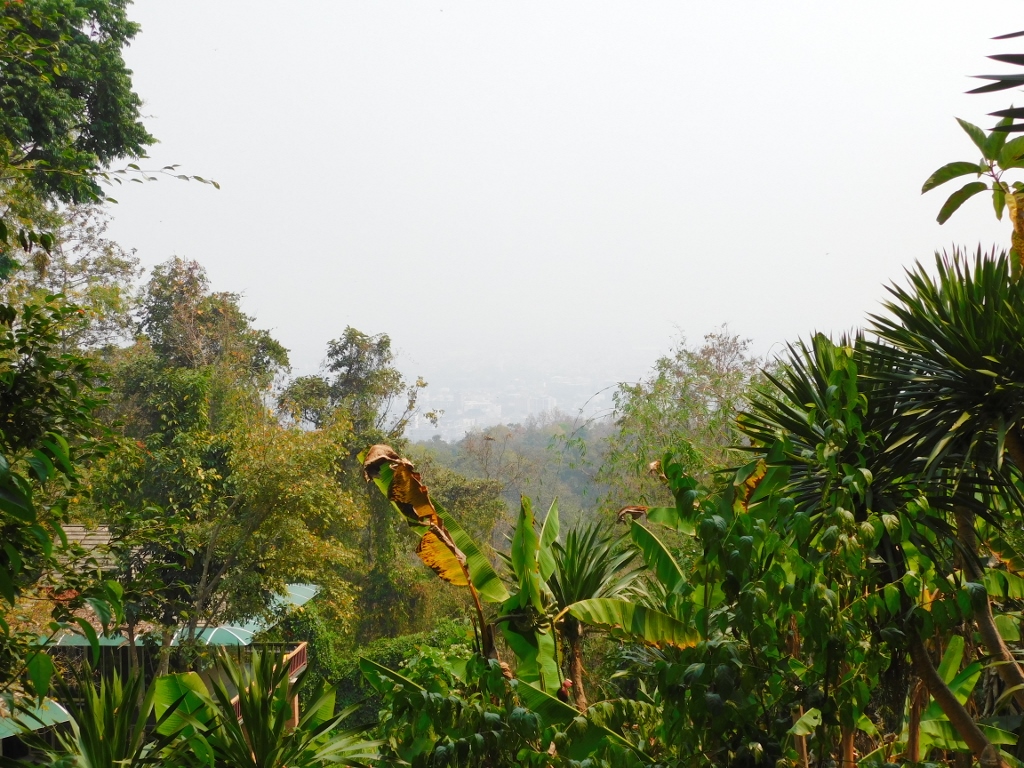 Wat Pha Lat, view at Chiang Mai
Wat Pha Lat, view at Chiang Mai
That’s why I focused on another part of the temple complex. There was a staircase divided into two parts – one guarded by lions and the other one by Naga serpents. A bit later, I went to the flat area between these two staircases, but I wasn’t at all inclined to descend any further.
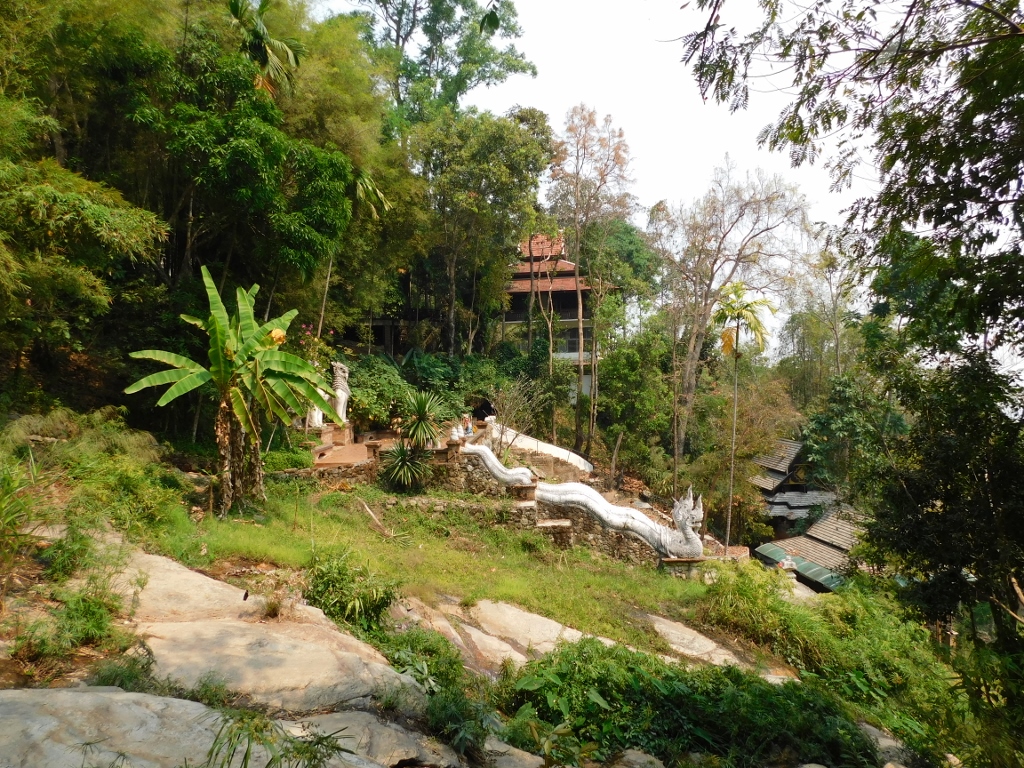 Wat Pha Lat, a detail
Wat Pha Lat, a detail
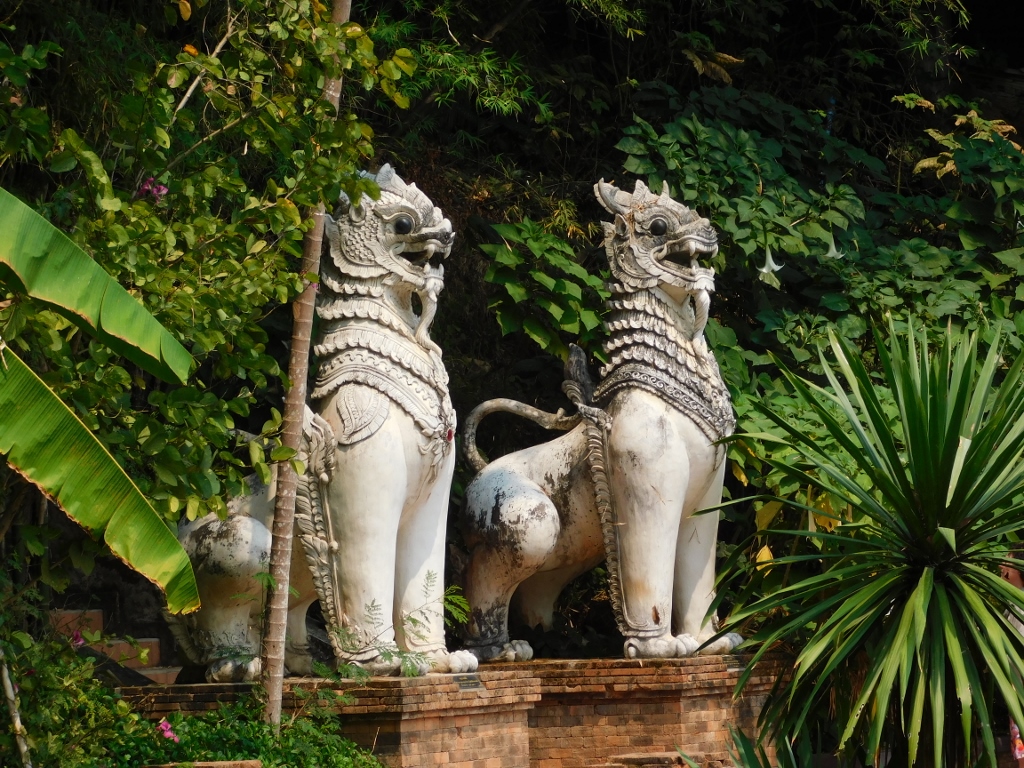 Wat Pha Lat, a detail
Wat Pha Lat, a detail
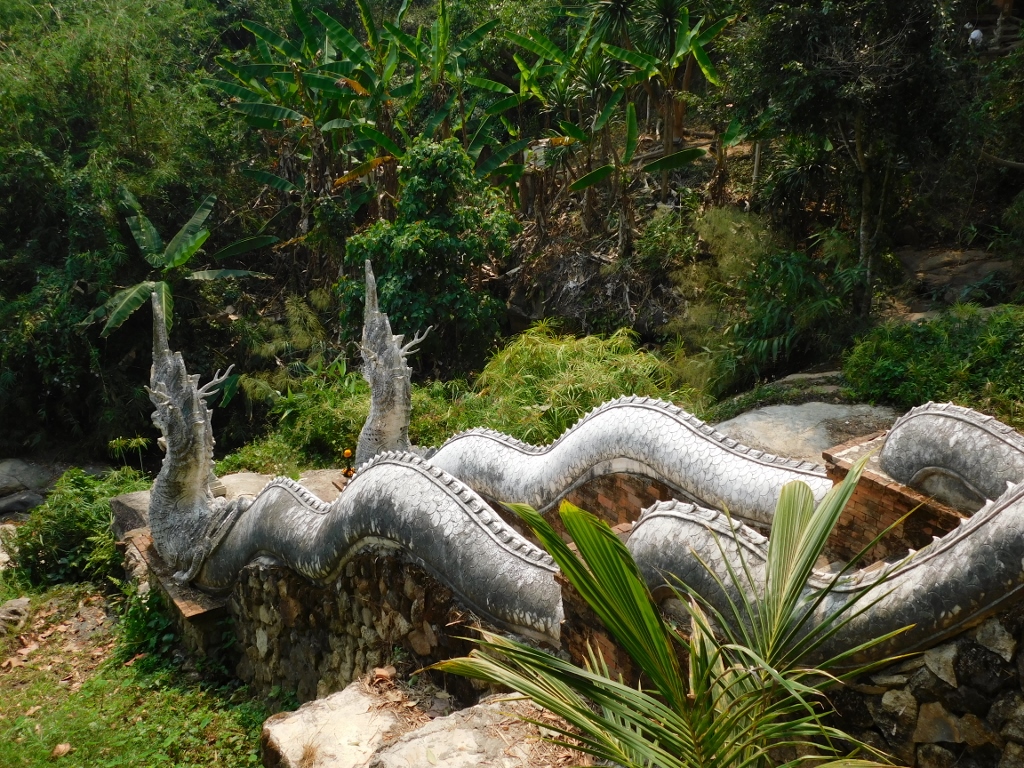 Wat Pha Lat, a detail
Wat Pha Lat, a detail
Now, I was ready to leave Wat Pha Lat and return to the main road. Along the way, at one point, I once again marvelled at the richness of details that Thai temples typically abound with. In the next photo, besides a small chedi, there is also a monkey figure and a mythical being lying with its fists under its head.
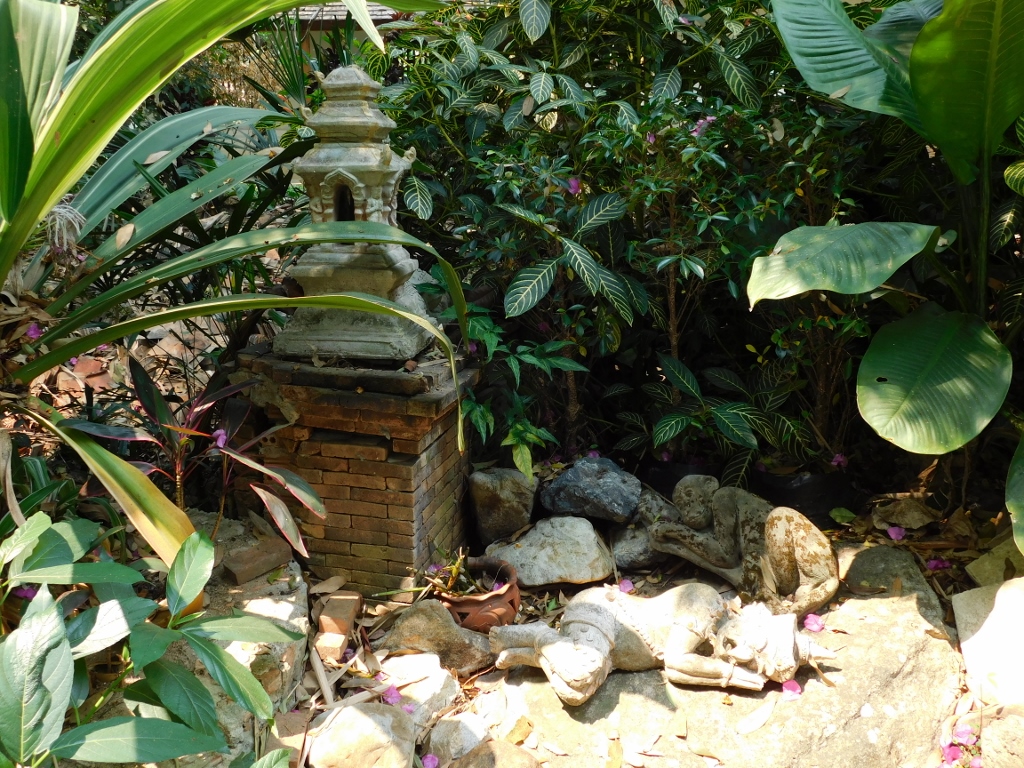 Wat Pha Lat, a detail
Wat Pha Lat, a detail
So, I returned to the main road and started waiting for a songthaew. I knew that sooner or later, one would pass by. In fact, a couple did pass, but they didn’t stop. However, it was clear to me that those were private hires paid by passengers as taxis, so they didn’t pick up additional passengers.
Soon, one did stop and I got inside where there were a few younger Thais with children.
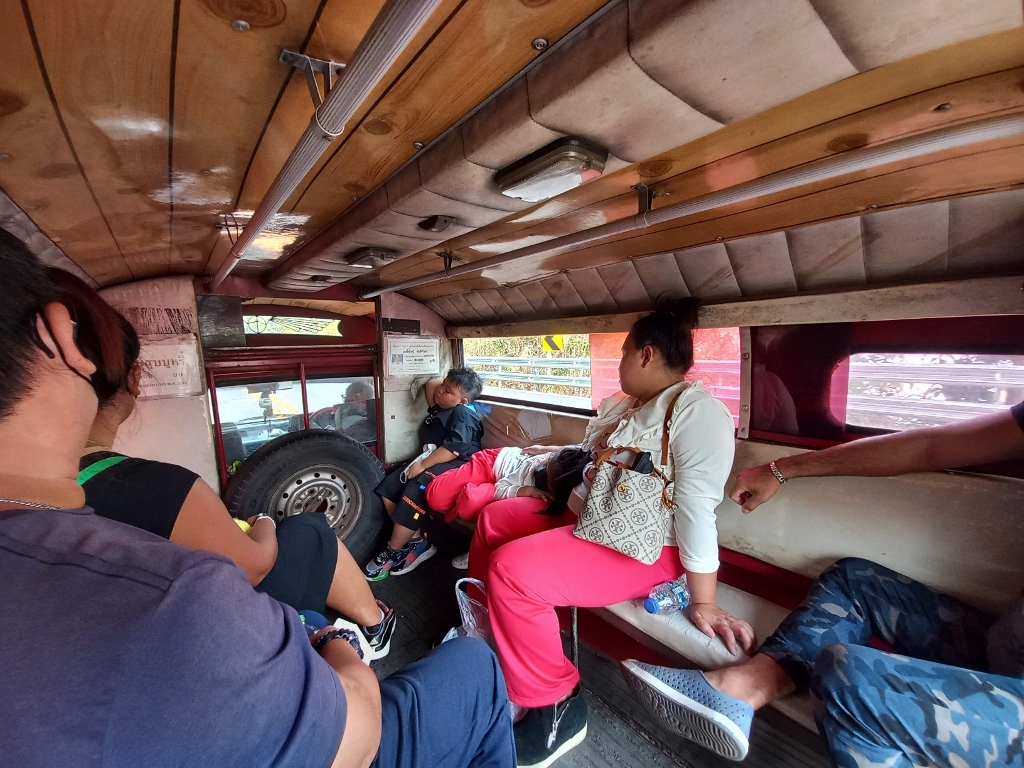 Songthaew to Chiang Mai
Songthaew to Chiang Mai
Since I took the first available seat, it meant I was next to the entrance/exit and that’s a very interesting position.
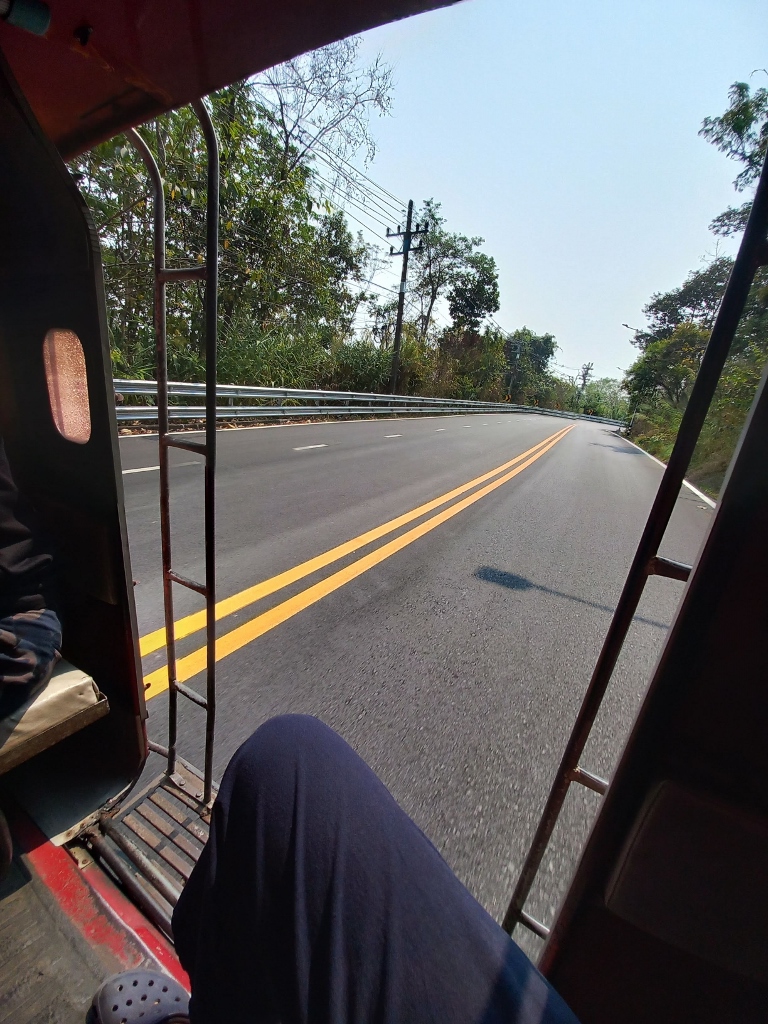 Songthaew to Chiang Mai
Songthaew to Chiang Mai
When we reached the foot of the mountain, the songthaew stopped at another temple and the driver turned off the engine, which clearly meant he wouldn’t be going any further. I wasn’t interested in going to that temple, but as it was very close to the Chiang Mai Zoo, so I walked there, thinking I might find alternative transportation. Along the way, I passed by a place selling animal figurines, presumably for home shrines or perhaps as offerings to official temples. In any case, this went well beyond the level of garden gnomes.
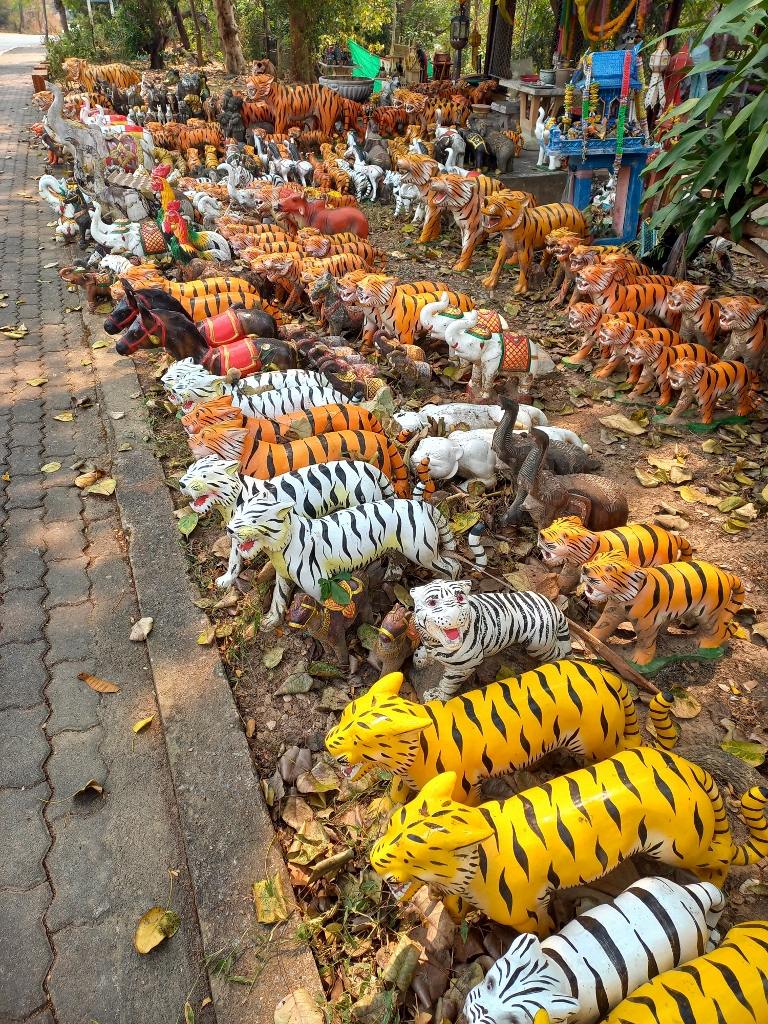 Chiang Mai, a detail
Chiang Mai, a detail
The Chiang Mai Zoo comes highly recommended, but I didn’t have time to explore it. The story goes that the zoo is more like a large park and I guess some of the animals can roam freely. I assume not the tigers or venomous snakes.
In any case, as I planned, I caught another songthaew near the zoo and soon arrived at the temple I did want to visit, Wat Suan Dok.
 Wat Suan Dok
Wat Suan Dok
The legend of the white elephant and the founding of the two temples on the mountain west of Chiang Mai actually begins here.
So, in the 14th century, a wandering monk from Sukhothai brought relics believed to be a fragment of a bone from the historical Buddha’s shoulder to the Lan Na kingdom. The fragment split into two parts, with one remaining here at the base of the mountain, safeguarded at the Wat Suan Dok temple, while the other one was given to the white elephant. I have already told the rest of the story in the previous sequel of my travelogue. According to the legend, this monk not only brought the relics to the Lan Na kingdom, but also introduced the Theravada Buddhism.
The temple was established in 1373 at the site that was then a royal flower garden. The most significant structure is the gilded main chedi in the shape of a bell, housing a part of those relics from the legend. During my visit, it was covered with scaffolding for renovations, but generally speaking it is 48 m high.
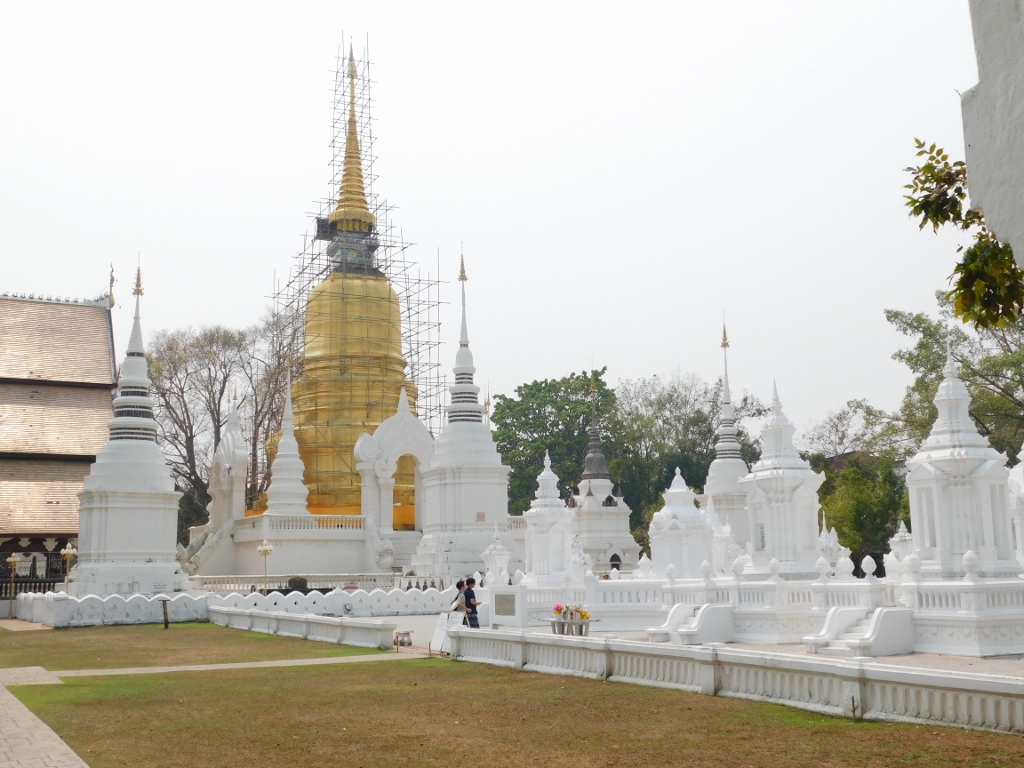 Wat Suan Dok
Wat Suan Dok
This main chedi is located right next to a large number of snow-white smaller memorial chedis that honour the Thai royal family. More precisely, these are all reliquaries containing the ashes of various members of the royal family.
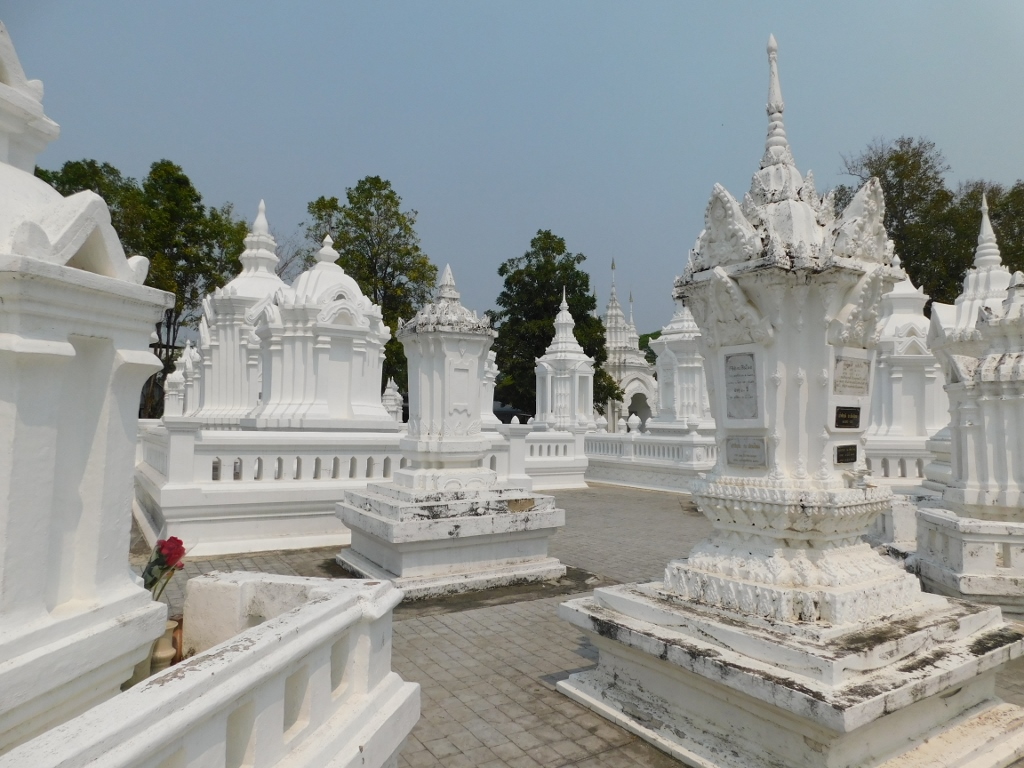 Wat Suan Dok, a detail
Wat Suan Dok, a detail
I took a stroll among these memorial chedis, then went to the main chedi, circled around it and then continued to the main vihara, which is enormous.
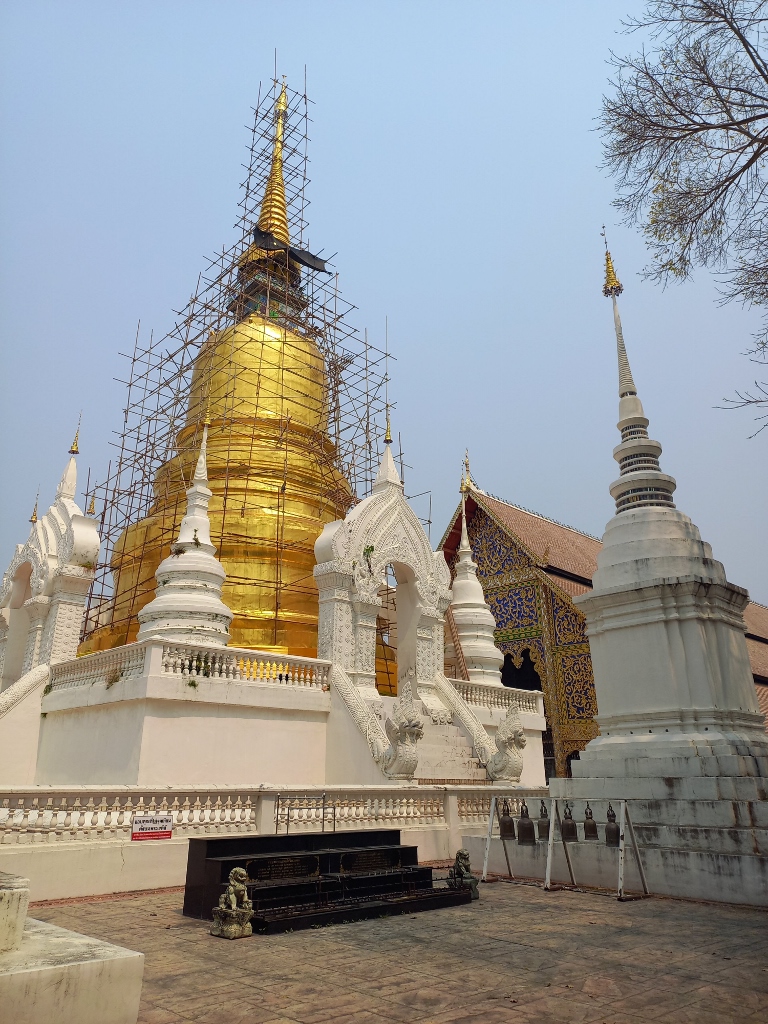 Wat Suan Dok, the main chedi and the main vihara
Wat Suan Dok, the main chedi and the main vihara
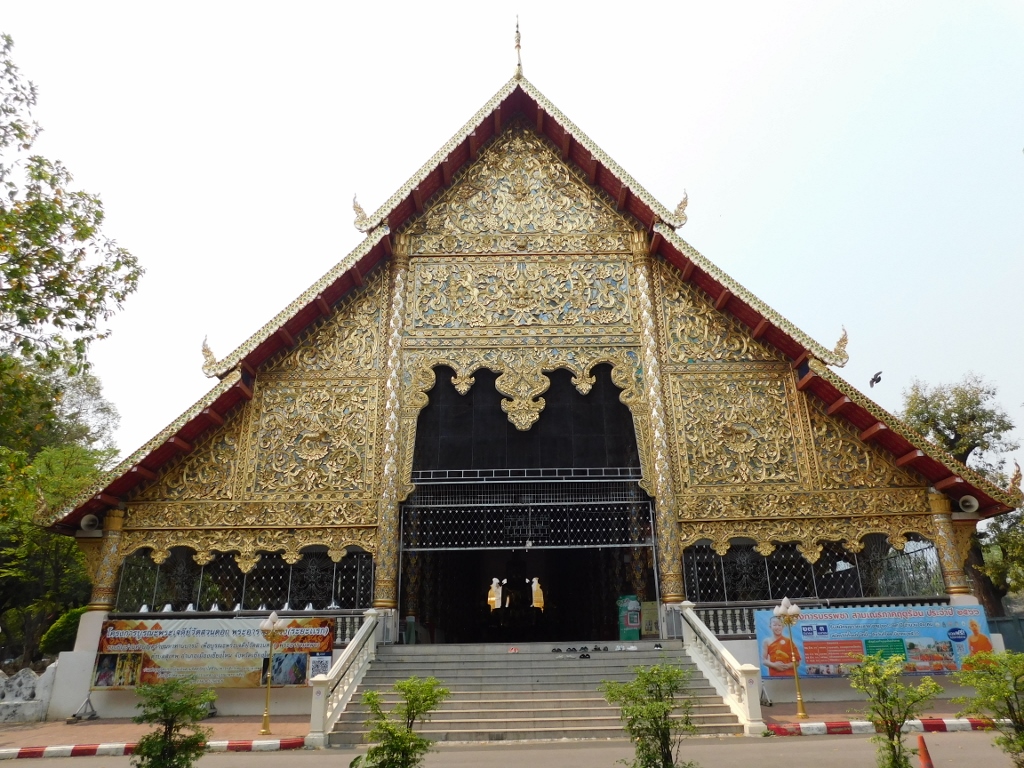 Wat Suan Dok, main vihara
Wat Suan Dok, main vihara
I’m not sure if the vihara was constructed around the Buddha statues housed within it or if it was the other way around. Nevertheless, inside, there are numerous Buddha statues, with the one in the centre in a seated position being particularly large. Another noteworthy statue is the one standing behind the seated Buddha, almost touching the ceiling.
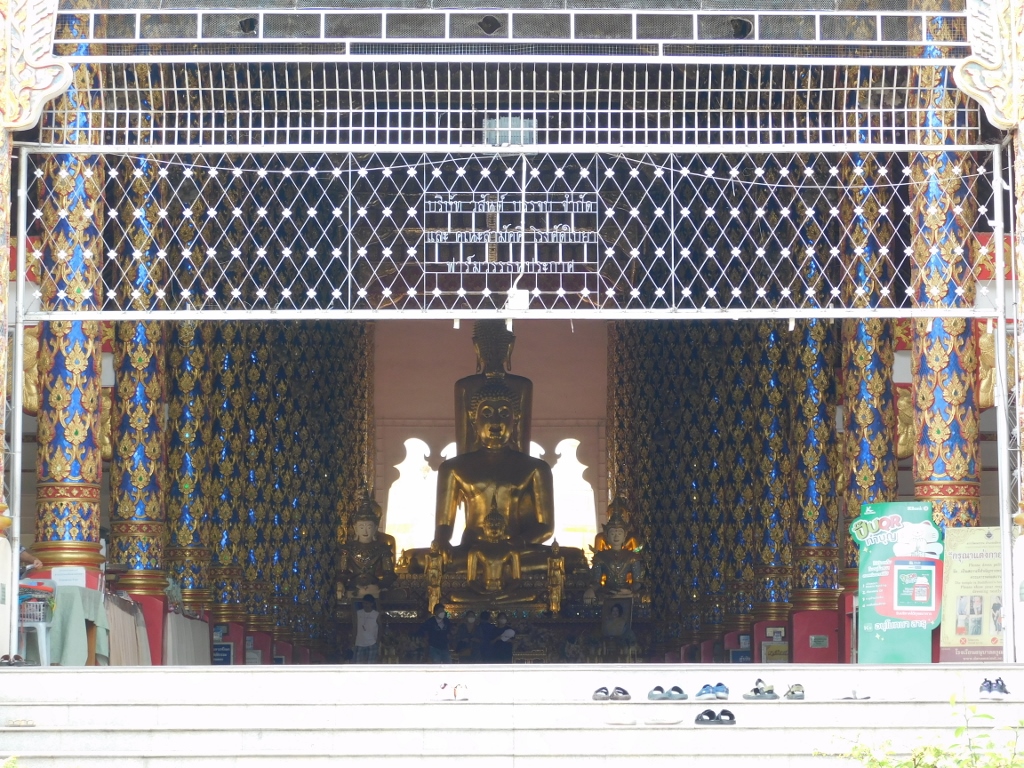 Wat Suan Dok, main vihara, a detail
Wat Suan Dok, main vihara, a detail
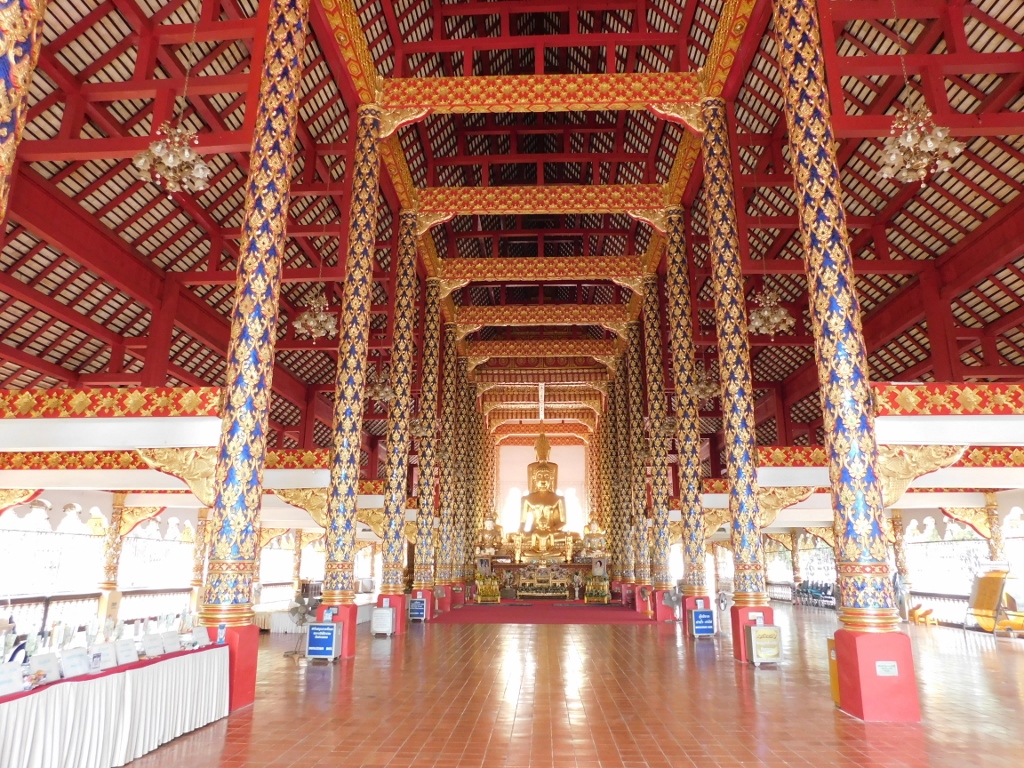 Wat Suan Dok, main vihara
Wat Suan Dok, main vihara
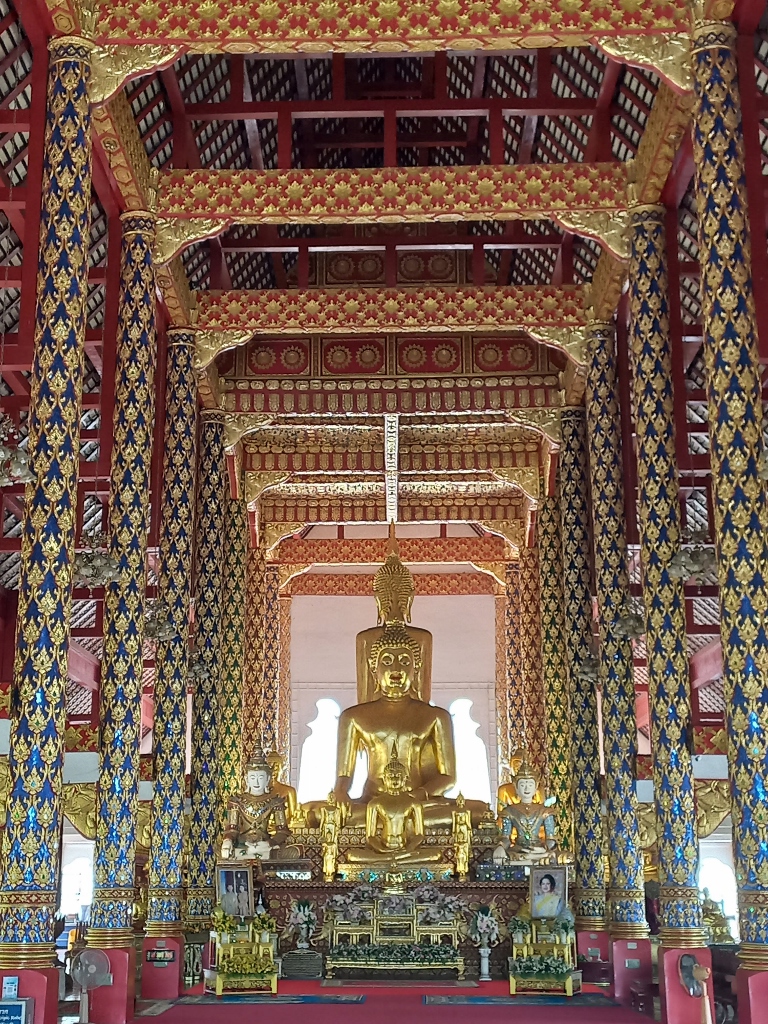 Wat Suan Dok, main vihara, a detail
Wat Suan Dok, main vihara, a detail
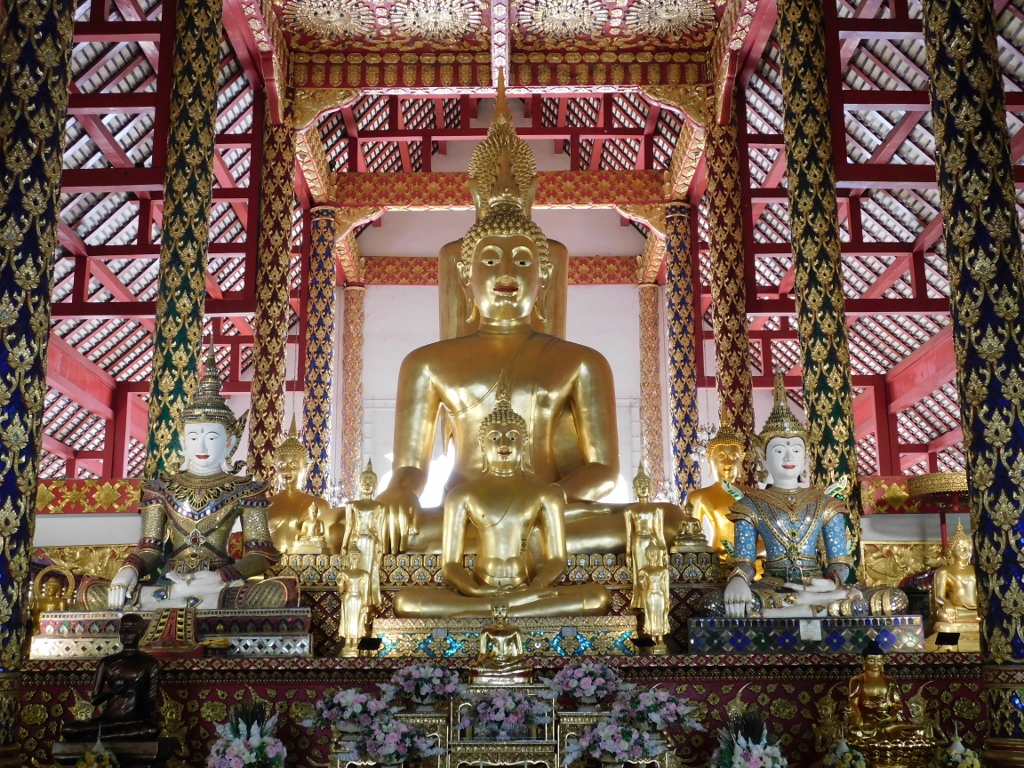 Wat Suan Dok, main vihara, a detail
Wat Suan Dok, main vihara, a detail
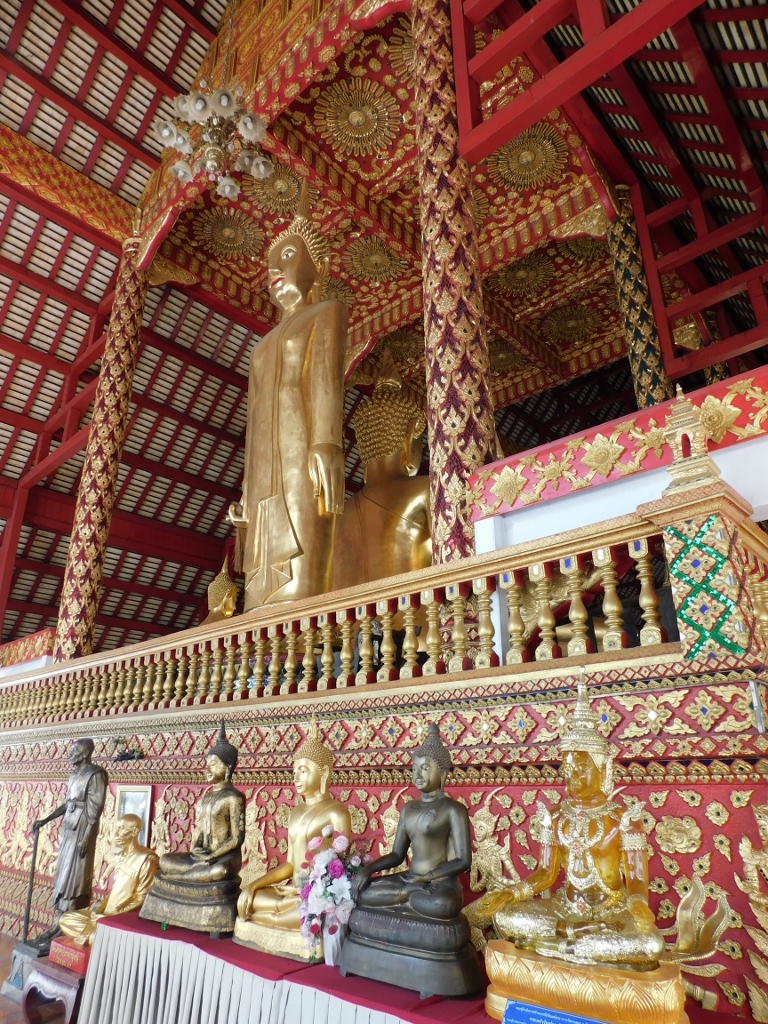 Wat Suan Dok, main vihara, a detail
Wat Suan Dok, main vihara, a detail
There are numerous details here as well, but their most important common denominator is the golden colour.
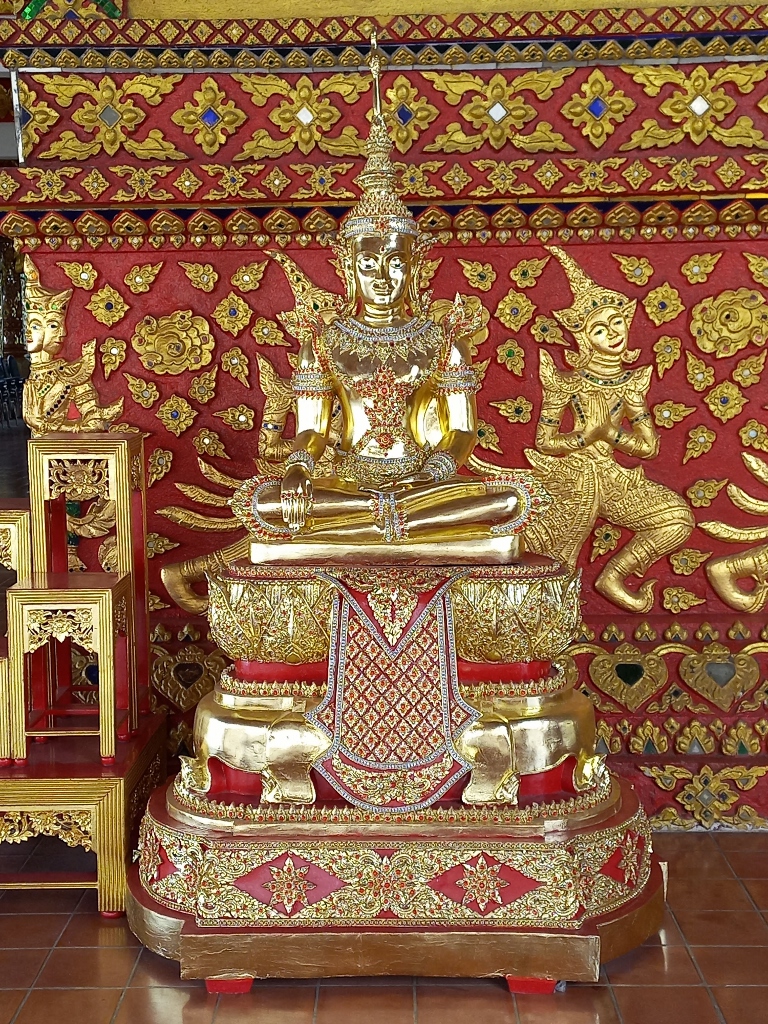 Wat Suan Dok, main vihara, a detail
Wat Suan Dok, main vihara, a detail
Here, I also noticed some contraption that seemed to me like a place where names and/or wishes are written on a canvas. There is also a donation box nearby.
 Wat Suan Dok, main vihara, a detail
Wat Suan Dok, main vihara, a detail
After visiting Wat Suan Dok, I walked towards the old part of Chiang Mai and the ancient Suan Dok Gate that was about 1.5 km away from there. Along the way, I bought a small plastic bag of mango, which was delicious and served me well as a refreshing treat. However, I then came across a restaurant that seemed good to me, so I spontaneously stopped to have a meal. I thought it was better to replenish my energy in time rather than wait to exhaust myself completely.
In the end, it turned out I was right – the food was excellent and exactly what I needed. On this occasion, I ordered northern Thai curry with fried egg noodles.
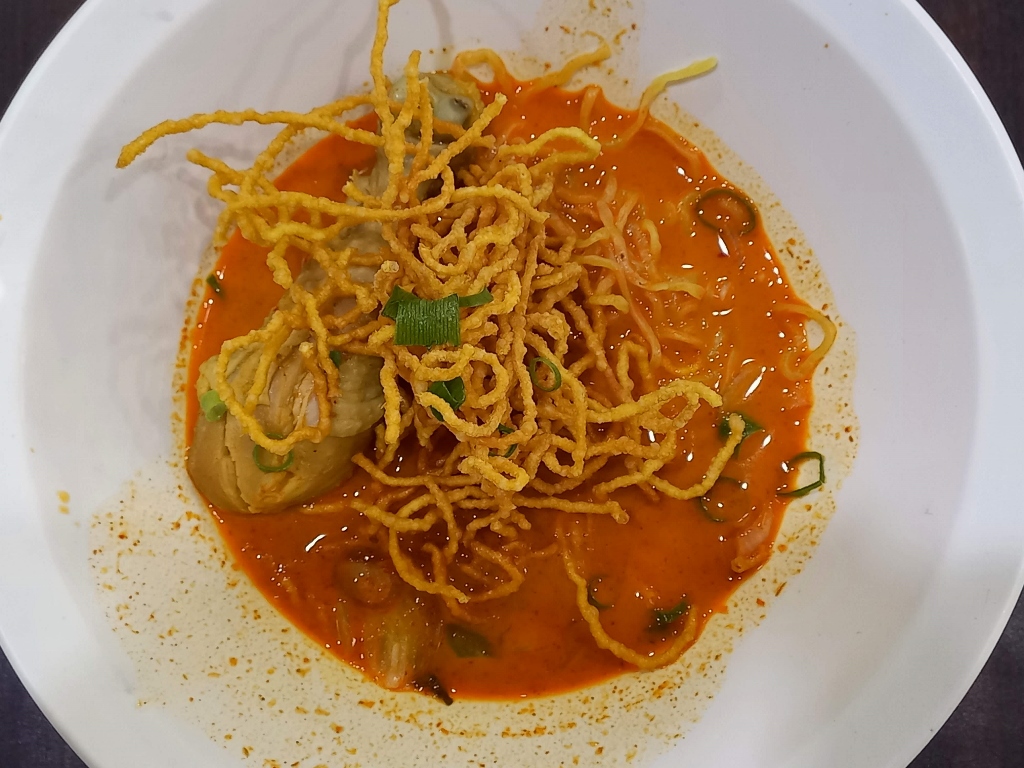 Spontaneous lunch in Chiang Mai
Spontaneous lunch in Chiang Mai
After the lunch, I felt more energised and so I continued walking with a light step.